* (restored)

Mr Blobby & family at Crinkley Bottom Theme Park 1994
‘He attracted nearly 17 million television viewers at the height of his fame, and even had a number one hit, but today Mr Blobby’s empire is a mere shadow of what it once was. The Mr Blobby character shot to fame on Noel’s House Party in the early Nineties, and the Crinkley Bottom theme park, also known as Blobbyland, created in his honour, opened shortly after his hit single ‘Mr Blobby’ in 1993.
‘New images of what was the Mr Blobby theme park in Somerset show a depressing ruin covered in weeds and trashed after all-night raves. The ravers should have more respect for Mr Blobby. He was a hero to a lot of kids and the thought of them taking drugs and having all-night raves in his house is completely disrespectful. The park closed its doors in 1999, after the popular Saturday night television show Noel’s House Party on which Mr Blobby featured was axed by the BBC.
‘Noel’s House Party host Noel Edmonds licensed three Blobby-inspired theme parks at the peak of the chubby character’s popularity. The Crinkley Bottom theme park in Morecambe, Lancashire, closed just 13 weeks after it was opened in 1994, while another in Lowestoft was also closed after the character’s popularity faded.’ — collaged
Gulliver’s Kingdom, Kawaguchi-machi, Japan (2007 – 2011)

‘Gulliver’s Kingdom was a failed theme park located near Kawaguchi-machi, Yamanashi prefecture, Japan. The park opened in 1997 and typified the “bridge to nowhere” construction projects Japan’s government and banking sector championed in the 1990s.
‘Gulliver’s Kingdom was backed financially by the Niigata Chuo Bank, which later collapsed into a sea of red ink and toxic, non-performing loans. As it morphed into a so-called Zombie Bank, the Niigata Chuo Bank was ordered to clear its books of unprofitable assets, of which Gulliver’s Kingdom was one: they had lent the venture around $350 million. In October of 2001, the unpopular theme park shut its Brobdingnagian doors for the last time.
‘On the face of it, Gulliver’s Kingdom had a few things going for it. Its location, for one thing – nestled in Kamikuishiki village at the foot of Mount Fuji. About 25 million tourists descend upon Mount Fuji’s environs each year and as beautiful as it is, how long can one look at a dormant volcano?
‘But Mount Fuji has a dark side, most notably the Aokigahara area where seemingly oblivious project planners decided to build Gulliver’s Kingdom. Ranked sixth by the website Cracked.com on their list of The 6 Creepiest Places on Earth, Aokigahara is Japan’s “suicide forest” – said to be the second most popular suicide location after San Francisco’s Golden Gate Bridge.
‘Bad enough Gulliver’s Kingdom had a suicide forest as its neighbor, the park’s other neighbors were much, much worse. Kamikuishiki village is notorious for being the location of the Aum Shinrikyo doomsday cult’s headquarters and nerve gas production facility. Remember Aum? They’re the cult who carried out Sarin gas attacks that killed 19 people, including 12 on the Tokyo subway. On March 22nd, 1995, the cult’s compound was stormed by over 1,000 police officers decked out in full-face gas masks.
‘Three years later (and one year after Gulliver’s Kingdom opened), residents living nearby were still being reminded of Aum Shinrikyo’s monstrous crimes. “I can still smell the chemicals sometimes when I take a walk in the morning,” said 69-year-old Norie Okamoto, who lives just 100 meters (330 ft) from one of the cult’s former Sarin production facilities. The exposure of Aum Shinrikyo was pretty much the straw that broke the back of Gulliver’s Kingdom, though there was really so much wrong with the park on so many levels one might say it was clearly doomed from the start.
‘Gulliver’s Kingdom wasn’t actually a Six Flags style park, by the way. The closest things to the usual amusement park rides and rollercoasters were a bobsled track and a luge course – not exactly ideal for the kiddies. Let’s not forget the immobile star of the show, a 45 meter (147.5 ft) long statue of Jonathan Swift’s epic character. Even the name of the park was a misnomer. If it’s Gulliver’s Kingdom, what’s the big guy doing securely pegged to the ground? No way to treat a king, now is it? Those are just some of the questions we’ll never know the answers to… and here’s one more: what’s inside the doors cut into Gulliver’s body??’ — Web Urbanist
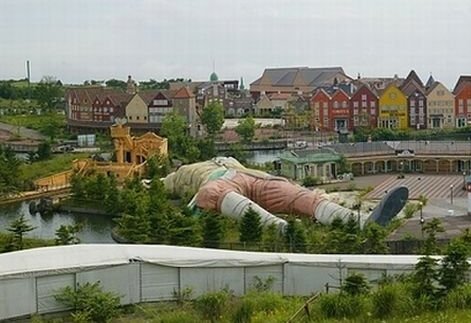
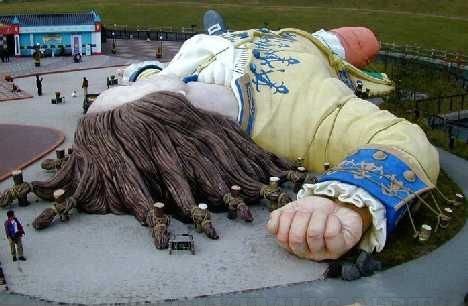


Take a tour of The Land of Oz
‘At the top of a winding North Carolina mountain road is the entrance to Oz, a 1970s theme park abandoned less than 10 years after it opened. In the same way the Wizard of Oz created the Emerald City to wow his subjects, entrepreneur Grover Robbins dreamed up the Beech Mountain theme park as a way of attracting families – and money – to the resort town. Using local craftsmen and entertainers, Robbins and designer Jack Pentes built their grand interpretation of the popular 1939 film over 450 acres.
‘The park was designed originally to walk tourists through the story, starting with the farmhouse, where Aunt Em could be found in the kitchen. As the sound effects of a tornado began, tourists would be ushered into to the storm shelter with one of several Dorothys who worked at the park. A door in the cellar would then open on to a tilted version of the farmhouse, to recreate the storm damage, and a pair of striped stockings and ruby red slippers of the Wicked Witch of the East, would greet the visitors as they left the house.
‘The Yellow Brick Road wound its way through the park, leading tourists to a replica Emerald City. Dorothy’s house, the castle of the Wicked Witch of the West and the Munchkin village were all faithfully recreated. The men behind the project even set up a balloon ride made out of a ski lift, so that visitors would get a winged-monkey’s eye view of the park nestled in the mountains before they were whisked back to the real world.
‘The park opened on June 15, 1970 by Debbie Reynolds, accompanied by her then little-known daughter, Carrie Fisher. In its first summer 400,000 visitors came to the Land of Oz, according to Watauga Lake Magazine. Sadly, however, Robbins never lived to see his masterpiece, dying at the age of 50 of bone cancer only six months before the park opened in 1970. More tragedy was to beset the park, when a fire destroyed Emerald City and part of the museum collection, including dresses worn by Judy Garland in the movie.’ — collaged
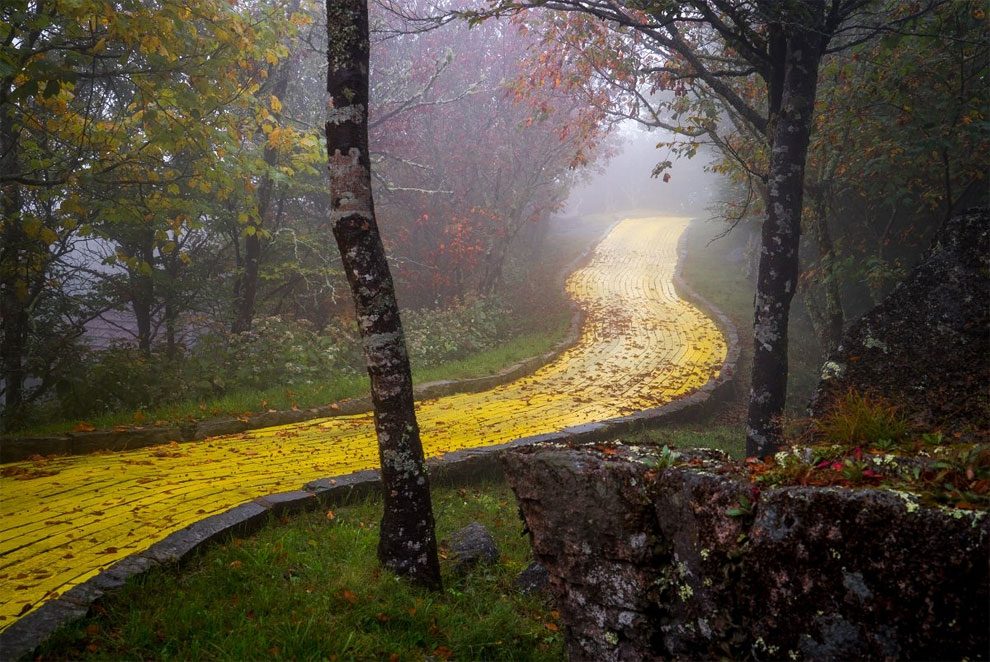

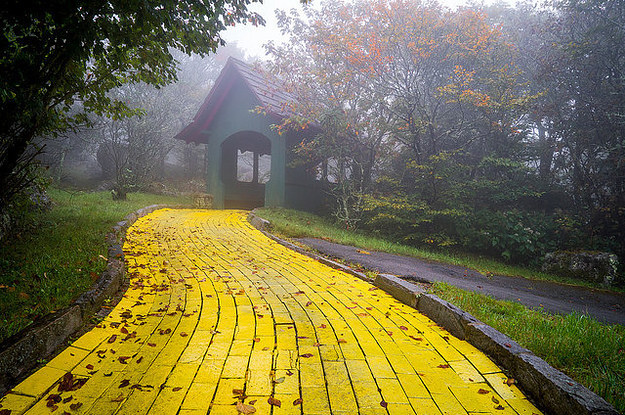

Dogpatch USA, State Highway 7 between Harrison and Jasper, Arkansas (1967-1993)
‘Though long abandoned, Dogpatch USA was arguably the country’s most successful hillbilly-themed amusement park centered on a trout farm. In 1966, the Raney family trout farm in Marble Falls, Arkansas went up for sale. A company named Recreation Enterprises bought the land for an obvious reason: to turn it into a rustic theme park based on Al Capp’s hillbilly-themed Li’l Abner comic strip.
‘The hick motif was none-too-subtle: attractions included Barney Barnsmell’s Skunk-Works, Rotten Ralphie’s Rick-O-Shay Rifle Range, and a roller coaster called Earthquake McGoon’s Brain Rattler. Instead of garbage cans, the park had “trash eaters”—mechanical pigs, goats, and wild hogs that would suck refuse from the hands of whoever fed them. (“Please feed the trash eaters,” read the signs, “they gits hongry, too.”)
‘Among all these exciting spectacles was the star attraction: the trout pond. Visitors could catch as much fish as they liked and have it cleaned and packed in ice for a dollar per pound. If you didn’t want to lug your trout home, staff at the Dogpatch restaurant could even cook up your catch and serve it to you for dinner.
‘Despite all these delights, by the mid-1970s, the park was beginning to flounder. Rising interest rates, a national energy crisis, and the fading of hillbillies from pop culture all contributed to Dogpatch’s financial troubles. New rides with tenuous links to the park’s theme attempted to capitalize on trends—Li’l Abner’s Space Rocket ride promised “all the thrills and realism of an actual space shuttle and all the fantasy of Star Wars.” It delivered neither.
‘After being sold to new owners in 1981, and again in 1987, Dogpatch USA struggled on until 1993, when it closed for good. The park has since been left to ruin. A 2002 attempt to sell it on eBay for a million-dollar minimum bid drew no buyers.’ — Slate
“She died of leukemia”: Santa’s Village and Halloween, 1960
‘Yesterday I went to look at Santa’s Village Open house which is up for sale for asking price of $2.75 million. Monica was the broker in charge and made sure only serious potential buyers came on to the property. There was only my dad and me and five other people who showed up. We were shown into the second floor of the entrance building were alot of blue prints were. They were all Walt Disney era blue prints from the mid 1950s. The most interesting was an expension plan to add “Holiday Village” [likely a themed shopping center much like what Universal Studios today has Universal City] to the front of Santa’s Village and shift the parking over to the east of the park. She was nice to deal with and gave a little insight as well into the property and including issues involved.
‘Santa’s Village itself is about 90% intact with one collapsed building south of the good witch’s bakery and some missing rides. I could not find the christmas tree ride or the bob sled ride but they may have been moved. I know the carousel was sold and the area were the cars are we never got to because of too much ice. Same problem with the mirror fun house. It’s there but cut off from ice. The monorail which is the feature ride is remarkably great condition, almost no peeling paint. What did disturb me though was despite the buildings great condition on the outside, much of the interior’s were ravingly destroyed by gutting. I asked Monica why and she told me the kids or relatives of the family were trying to remodel it and get it open again but gave up. I hope to save this great piece of history and make it more magical and wondrous then ever before but I will need help and support to make my ambition come to fruition.
‘I want to open it again but it won’t happen without some considerable help. I need investors and people who will help support my creative cause and ambitions to get this place open again. I want to make it infact better than before utilizing the full 189 acres of land and not just the fifteen acers it originally utilized. I also want to have a year round massive led light display that will dazzle millions of people who flock to see it year round and I will have all the original rides plus addtional rides that are both great for kids and adults. It would have shipping, lodging, time shares, ice skating, entertainment and the world’s largest art park featuring my giant recycled robots. It will have new and ever expanded added attractions each year so people will always have something to look forward to year after year and they will not ever know what to expect in the way new and exciting things.’ — hamblin1325
Ghost Town in the Sky, Maggie Valley, North Carolina (1960 – 2002)
‘Despite a recent attempt to reopen it, Ghost Town in the Sky—an allegedly cursed amusement park in North Carolina—has recently been put on the market for $5.95 million, The Charlotte Observer reports.
‘The 250-acre Wild West-themed attraction, which opened in 1961, sits atop Maggie Valley’s Buck Mountain near Asheville, North Carolina. Perched at a 4600-foot elevation, it can only be reached by a chairlift, an incline car, or a really long hike.
‘Valerie and Spencer Oberle have been working to buy the park, renovate it, and reopen it, but have faced several setbacks along the way, including serious financing issues. Valerie Oberle told The Charlotte Observer that although their offer has expired, they haven’t abandoned their hopes of resurrecting the abandoned mountaintop attraction. It’s difficult, she said, since “the property continues to deteriorate as the owner has not taken any measures to preserve,” but the couple is still trying to raise funds to purchase the park. In the meantime, the park is still up for grabs.
‘Ghost Town in the Sky gained its cursed reputation for a few different reasons. In 2002, a mechanical malfunction trapped tourists in the chairlift for hours, and in 2010, a catastrophic mudslide blocked the only road to the park. But perhaps the most unsettling event occurred in 2013: A cowboy, in the middle of staging a routine (pretend) gunfight, was shot and wounded with an actual bullet. We don’t know how or why the gun was loaded, but the incident seems a little Westworld-ian.’ — Mental Floss
Takakanonuma Greenland: Scary and Abandoned

‘In Japan’s Fukushima Prefecture, there is an abandoned amusement park known as Takakanonuma Greenland. It sits in the outskirts of Hobara, a section of the Japanese city of Date. Very little is known about this park, and its exact location is largely unknown. You can’t find it on any Japanese map, as it simply isn’t there. Supposedly, its coordinates are 37°49’02.16″N 140°33’05.78″E, but if they are put into Google Maps, the search will be directed to the center of Hobara. This is inaccurate, since the park is hidden in a mountainous, rural area.
‘The only major information known about Takakanonuma Greenland is that it opened in 1973, and closed two years later. Some claim that this was due to poor ticket sales and needed renovations, but locals say that it was because of a significant amount of deaths on the rides. Miraculously, the park reopened in 1986, but struggled to remain open due to increased competition from bigger parks such as Tokyo Disneyland, as well as financial trouble. Finally, in 1999, Takakanonuma Greenland closed for good.
‘Following its closure, the amusement park was left to rot. Photographs from urban explorers who have infiltrated the area show a massive amount of decay. The ferris wheel and the roller coaster are covered in rust, the entrance is covered in graffiti, and the premises are being reclaimed by plants. The most notable feature of the park is the dense fog that always looms over it, giving off a Silent Hill feel. Like the information about the area, there is very little photography and video of it.
‘Allegedly, Takakanonuma Greenland was demolished in 2006, and now sits as an empty lot. However, in 2007, a citizen of the United Kingdom named Bill Edwards claimed to have visited an untouched, completely intact park. Supposedly, he took numerous pictures that were identical to those taken before the park’s supposed demolition, showing the same rusty, forgotten rides. However, according rumor, when uploading these photos, only one appeared on his computer. This picture shows the entrance to the park on a foggy night, illuminated by the flash from the camera. In the center of this picture, you can barely make out the figure of what looks like a six year old girl in a white dress. She appears to be staring at the photographer with a serious, indifferent face.
‘The girl has never been identified, and the whereabouts of Bill Edwards are currently unknown…’ — Creepy Pasta
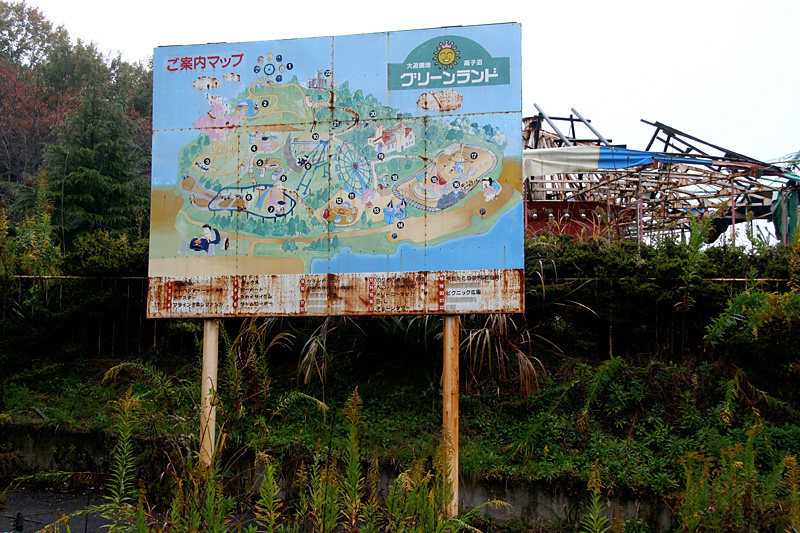

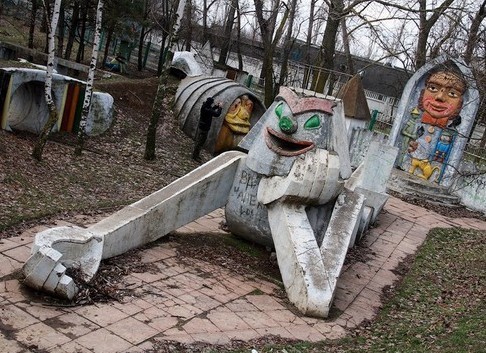
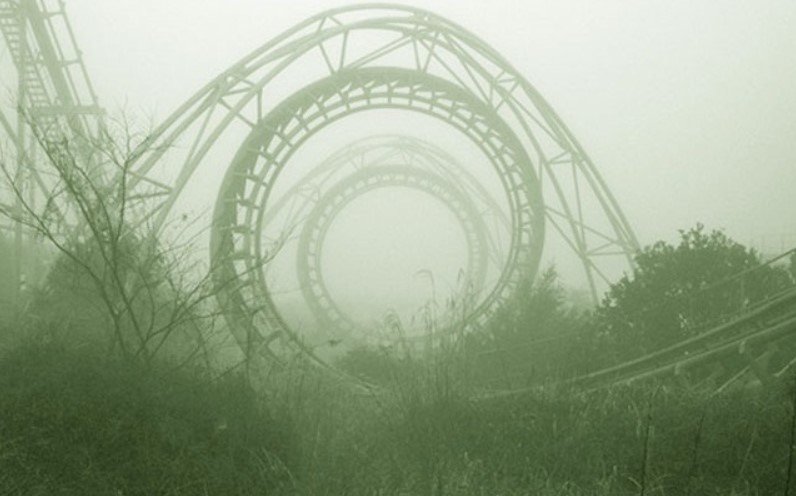
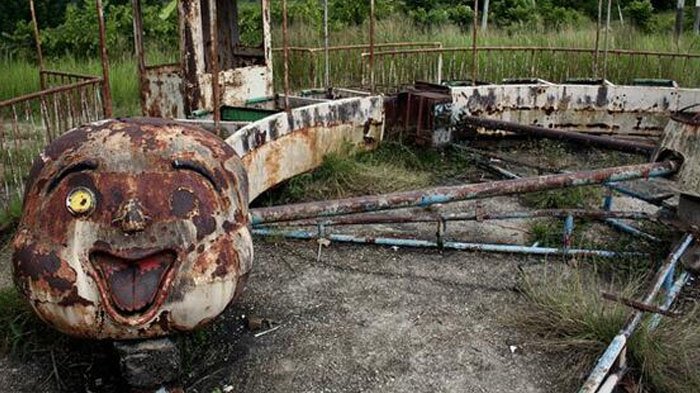
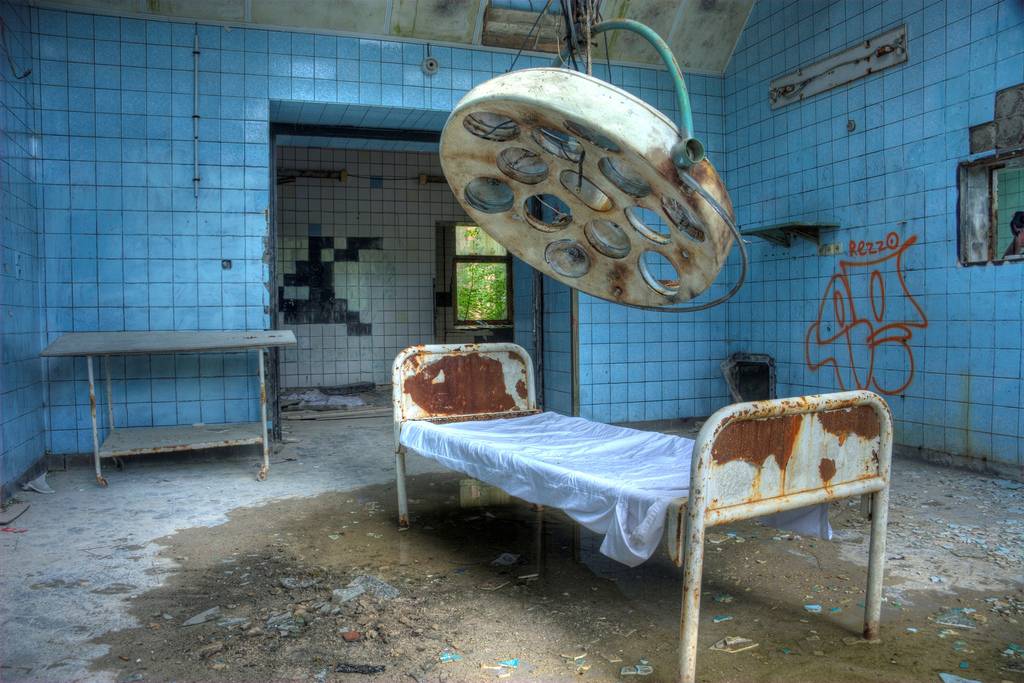
The Whacky Shack Dark Ride
‘Joyland, home of the Whacky Shack was one of two amusement parks that were in Wichita during the middle of the twentieth century. The downtown area contained a kiddieland park while Joyland was located on the outskirts of the city. Like many other parks around the country, Joyland noticed vandalism and theft in the darkride soon after it opened. The park started noticing that people were walking the midway wearing parts of the ride, like the vines! One innovative ride operator thought that he had the answer to this problem so he hid barbed wire in the vines! The park’s owner soon put an end to the solution and had the barbed wire removed. Like some other parks, they eventually installed fence between the riders and the scenery.
‘While the ride opened with standard darkride cars, they were eventually changed to rotating type Pretzel cars to add some additional surprises. As at some other parks, maintenance concerns and people with motion sickness ultimately forced the park to weld the cars to stop the rotation. One operator relied on the heavy weight of the car and the darkness to help him add some surprises of his own. He would hide in the darkness and jump on the rear bumper of a car as it rolled by. He then would whack the young men in the head with a piece of rubber hose! The park owner noted that not one of them ever said a word about it when they exited the ride.
‘As the years went on, some changes crept into the ride. The ride’s designer, Bill Tracy, was into thrills, not maintenance. The two dips that were originally built into the ride were removed and replaced with level track. The barrel that the cars traveled through in one portion was built by the park but it never worked quite right so it was removed. Another minor problem was that of operators losing track of the cars in the ride. The first solution was a simple one, don’t send in a car until you see one come out! In its final days, a computer prevented the cars from getting too close together, if they dis the ride stop, the lights came on and the doors opened. The ride also shut down if someone got out of the car and ran ahead.
‘Due to economical troubles and safety concerns Joyland had to close for the 2004 season. Since its closing, it has been subjected to numerous incidents of vandalism and looting. Nearly every building is covered with graffiti, and the vintage sign from the top of the roller coaster has been stolen. The administration offices have also been destroyed. Park owner Margaret Nelson was quoted as saying “We’re sick. Our hearts are just sick. It’s not easy, not easy.” Interest in the park sparked again in 2006 when a Seattle based company, T-Rex Group, leased the park to restore and open portions of the park. After financial concerns with the park, the T-Rex group did not open the park for another season. Joyland has now sat since 2006 without any maintenance and continually deteriorates.’ — collaged
Spreepark, Berlin, (1969 – 2002)
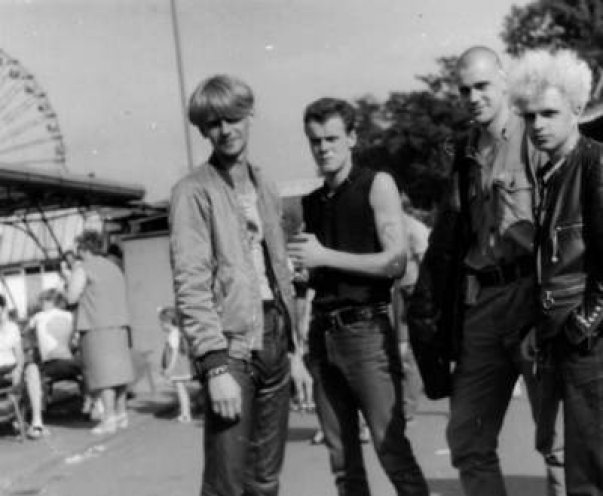
‘The Spreepark in Southeastern Berlin has been abandoned for the last 10 years, and it looks like it. Each part of the park is scattered with remnants from the previous three decades, making a hodgepodge of bizarre entertainment, children’s rides, and life-size dinosaur statues.
‘Originally constructed by the communist government in East Germany in 1969 as the VEB Kulturpark Plänterwald, the “Kulti” stood until the fall of the Berlin Wall 20 years later. It thrived throughout the communist era with 1.7 million visitors annually.
‘The controversial amusement park operator Norbert Witte took it over in 1991, renaming the park “Spreepark.” He replaced the primarily asphalted surface with a grass and water landscape and installed a number of rides which he bought from the insolvency of the Mirapolis amusement park near Paris and moved to Berlin. Witte changed the scenery multiple times, even adding an English village. Unbeknownst to police and Berliners, Witte had also become involved in smuggling cocaine, concealing it in pieces of ride equipment shipped between Peru and Germany during his time as park administrator.
‘Due partly to his criminal activities and due partly to lackluster visitor numbers, Spreepark was shut down to the public in 2002, and Witte was tried on smuggling charges two years later.
‘The result of this shutdown was the amusement park which has slowly fallen into dereliction and has been taken over by nature. The whole park was featured in the film “Hanna,” and the main sites are prominent in the film’s climax.
‘A number of features were destroyed in a fire in 2014 which was caused by arson., following which security was strengthened with a new perimeter fence and permanent security personnel and dogs. In 2016 the site was taken over by the company Grün Berlin GmbH, owned by the City of Berlin, with the objective of transforming the site into a location for arts and culture. Plans were proposed in late 2018 and are being considered for implementation in several years.
‘As of May 2019, many of the previous attractions of the park have been removed. However, the Ferris wheel and the “Fresswürfel” restaurant from the “Kulti” period remain, as do the “Spreeblitz” rollercoaster, the “Cinema 2000,” the facade of the English village, the cup carousel, and the artificial rock of the “Grand Canyon” wild water ride from Norbert Witte’s Spreepark period.’ — Atlas Obscura




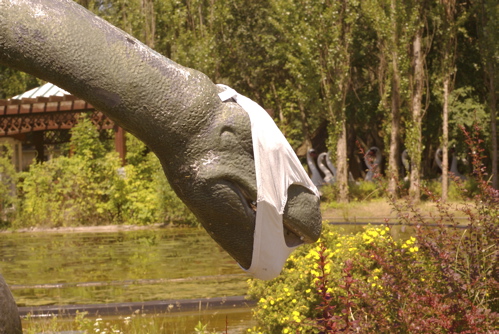
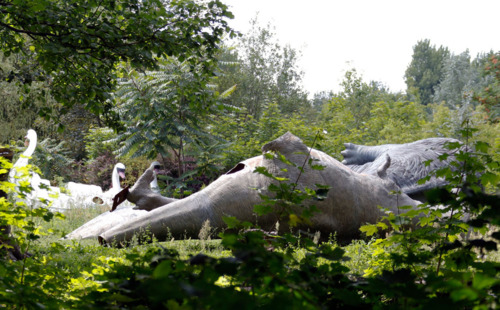
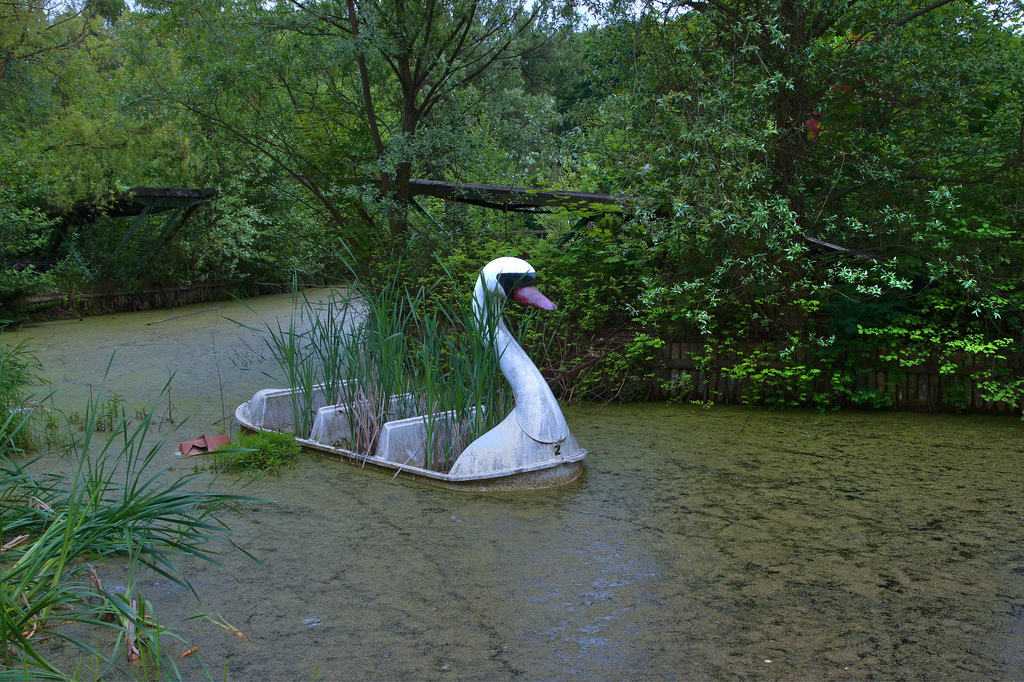
Camelot Theme Park official Promotion Video 1989
‘Camelot Theme Park, located near Charnock Richard (about 3 miles from Chorley in Lancashire, UK) was a theme park inspired by the Medieval legend of Camelot. Opening its gates in 1983, Camelot Theme Park’s rides and attractions were aimed towards children and families, and the Park was a popular draw for school trips (including my own). Gradually, over the years, thrill rides and roller coasters were added to the mix.
‘At its height in 1995, Camelot attracted 500,000 visitors seasonally. However, in 2005 this had declined to just below 340,000. The Park went into receivership in early 2009 (during the off season), but eventually opened for business in May of that year. By this point, the Park was receiving mixed reviews, with cleanliness and general maintenance cited as lacking in some areas. It’s also fair to say that the Park was not a patch on Alton Towers in terms of thrills, and Gulliver’s World in Warrington was also a draw for families and children. In 2006, Camelot came joint bottom in a poll conducted around healthy food at UK visitor attractions, scoring one point.
‘Faced with dwindling attendance, Camelot announced that it would close after the 2012 season. The Management cited the Olympic games, Her Majesty’s Jubilee and poor summers as the reason for closure. The owners of this closed theme-park wasted no time in dismantling the attractions and selling off rides to the highest bidder. They are considering other uses for the area, and the site will most likely become a housing development if plans go forward. However, their plans to redevelop the former Camelot theme park site into a 420-home housing estate have been described as ‘disastrous’.’ — collaged
Shidaka’s Utopia, Beppu, Kyushu, Japan (1970s – 1994)
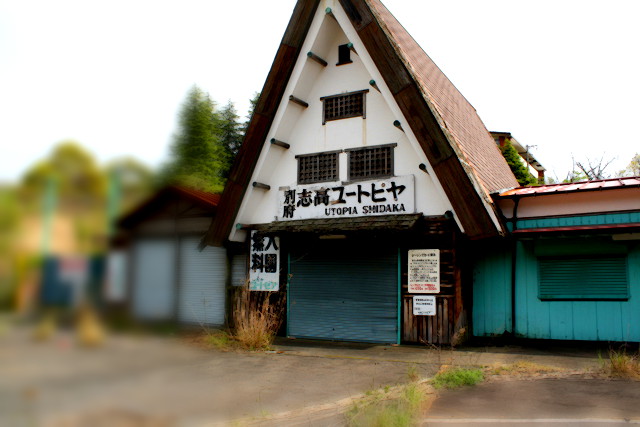
We found an amusement park in Kyushu–Japan’s largest southern island–from some grainy satellite photos. It opened in the early 80s and lasted just over ten years before it was abandoned in 1991. Most Japanese people say that Kyushu lags 20 years behind the rest of the country, and although it felt Japan’s economic situation with the same heinous consequences as the rest of the country, it hasn’t seen nearly as much recovery.
Matching the satellite pictures to maps of Beppu’s mountainous hinterland, we eventually found an entrance, preceded by cracked pavement and dead clumps of weed. The sober, predictably ironic, Japanese sign said “Shidaka’s Utopia.”
From the entrance you can see a field of deserted amusement attractions. The first attraction we went to, the roller-skating rink, still had all the skates. It was like everyone went home after work one day, and just didn’t come back. Which, I guess, is pretty much what happened.
The water in the boating pond looked pretty grim, and outgrown and ragged shrubs and weeds surrounded it. The helter-skelter looked like something from Return to Oz.
We found a house of horrors on the other side of the pond. With only a totally pointless phone-light and our camera flash to guide us, we wandered through the dark tunnel. The decay had taken its toll on the robotics. One character on the ride had been based on a traditional Japanese folk tale about a cat ghost, but the cables and pistons that once gave it life had torn its face out. Probably adding to the effect.
There were quite a lot of monsters and disassembled robo-beasts on our way out. It was all quite impressive; it made me think of The Killing Joke where the Joker takes over an abandoned theme park–with scary/rapey results.
Slightly out of the way was an enormous Ryokan hotel for the families that couldn’t cram all this J-amusement into a single day. Some windows were broken, but from the outside it looked like it was more a victim of neglect than abuse.’ — Vice


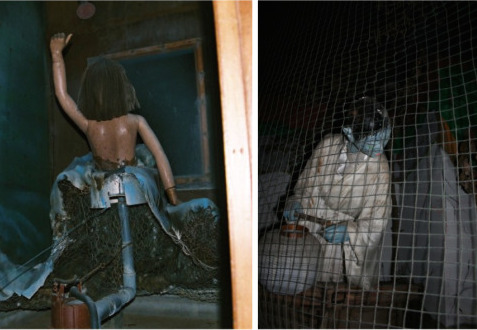
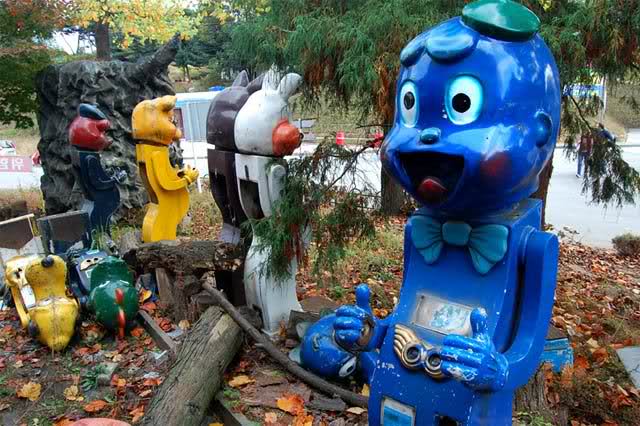
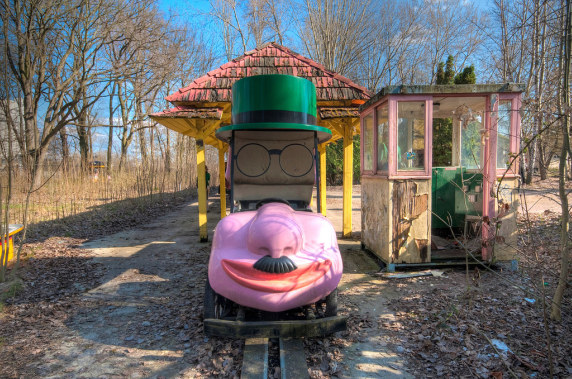
A Collection of Bits of Videos About Heritage USA
‘In 1986, Jim and Tammy Faye Bakker’s Heritage USA was the third most-visited amusement park in the US, behind only Disney World and Disneyland. Much of the park, the area of which once comprised 2,300 acres (9.3 km2; 3.6 sq mi), was built by noted church builder Roe Messner, who later married Tammy Faye Bakker after Tammy’s divorce from Jim Bakker. Now the park that once entertained millions of guests is falling to pieces, and looks more like the scene from a post-apocalyptic movie than a place for family fun.
‘The facilities included the 501-room Heritage Grand Hotel, Main Street USA, an indoor shopping complex, the Heritage Village Church, a 400-unit campground, The Jerusalem Amphitheater, conference facilities, a skating rink, prayer and counseling services, full cable TV network production studios, Bible and evangelism school, visitor retreat housing, staff and volunteer housing, timeshares and the Heritage Island water park and recreational facilities.
‘In the midst of Heritage USA’s high point, when it earned $126 million per year, the IRS revoked its tax exemption. Soon after Bakker’s federal indictment and public condemnation over his sexual affair, attendance dropped at Heritage. Falwell argued that “PTL’s Heritage USA complex in Fort Mill was competing unfairly against tax-paying tourist attractions, and that the tax-exempt ministry should be separated from the running of hotels and amusement parks.” Under Falwell’s leadership, Heritage USA sought chapter 11 bankruptcy protection with debts estimated at $72 million. The 165,000 people who gave $1,000 to Jim Bakker’s planned Heritage USA hotel tower in return for promised four-day vacation stays received $6.54 each.
‘Heritage USA opened in Fort Mill, SC, in 1978, and by the mid-eighties drew in six million visitors each year. The park was perhaps best-known for “Jerry’s Slide,” a 163-foot water slide that Falwell slid down in his suit, resulting in one of the most famous photographs of the televangelist. But those water slides and fairy tale castle were, in part, responsible for Falwell’s downfall. After scandals regarding Falwell’s fundraising efforts to build the park’s never-completed hotel and the IRS’s revocation of its tax-exempt status, Heritage USA was hit by another, more physical blow. Hurricane Hugo wreaked havoc on the park’s buildings in 1989, and Heritage closed for good shortly afterward.’ — collaged
Joyland, Wichita, Kansas (1949 – 2004)
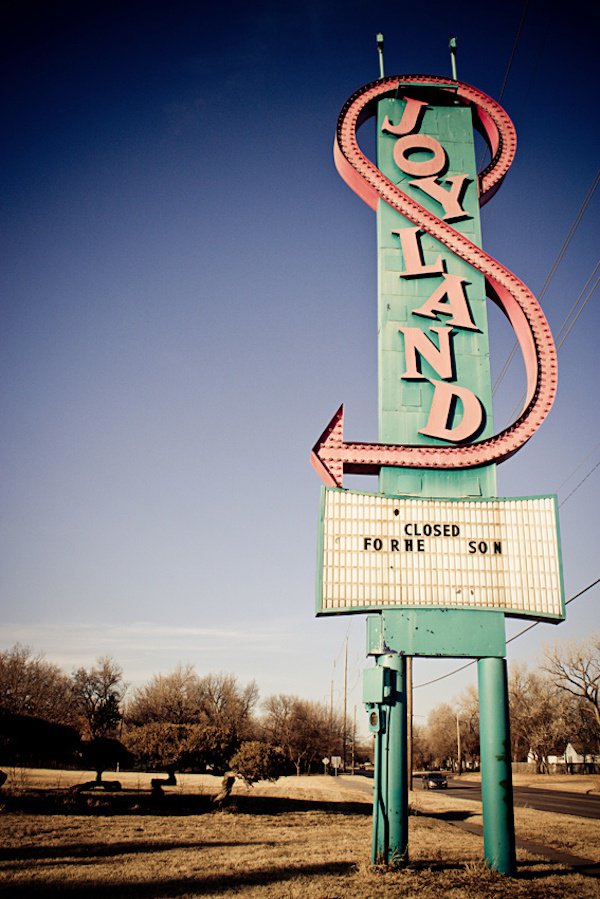
‘Lester Ottaway opened the 40-acre park in 1949 during the beginning of the post-war economic boom as the aircraft industry in Wichita took off and the city’s population was rapidly growing. A total of 1,200 cars filled the parking lot on the day the mayor cut the ribbon on the roller coaster.
‘Evenings at the park were especially memorable in the days before television and air conditioning were commonplace. The park’s Easter celebration, started in 1949, continued every year until it closed in 2006, and in 1959, it included 1,000 free carnations for the first 1,000 women in addition to eggs for the children.
‘The first year the park opened, Margaret Heinzman, 15, was fired from her job selling ice cream because, she was told, her presence caused too many boys to linger near the ice cream wagon. Two years later, Heinzman met Stanley Nelson, a veteran who wore a suit and tie to his park job every day. They married that same year. The Nelsons took over the park in the 1970s and ran it until 2000.
‘The park won an award for its “Moonlight Swim” promotions, and later, Eagle reporters would wax poetically about the events when they brought their own children a generation later.
‘In the 1960s, before the animal rights movement became what it is today, an 8-month-old lion bit a caretaker at the park and three deer escaped, two of which died. In 1964, the park was sued for $400 when a girl smashed her teeth into the steering wheel of a bumper car, back before seat belts became mandatory for theme park rides.
‘In the late 1960s, the park added a skating rink with “bright colors” and “decorative lighting.” By the time the 1970s were in full swing, it had built The Wacky Shack, a ghost ride that featured “illusion effects” and “psychedelic lighting tricks.”
‘The park always brought in tours to keep its act fresh. In the 1950s, it brought in a 100-foot Ferris wheel, the largest portable wheel available. In the 1970s, it featured a large country music lineup at the Wichita State Fair, an event the owners hoped would be on par with but not detract from the fair. The Nelsons, who bought the park in the 1970s, brought in the “father of Jesus Rock” in 1978 to perform at a two-day festival that included free camping.
‘Just as nostalgia for the park rose, so did complaints about the long lines and younger generation. Allen Hardy, who said he served over a million Sno-cones at the park between 1950 and 1980, said the patrons “don’t dress like they used to. They seem sloppier than they used to be. So are their manners. But I guess old folks have been saying that the younger generation is going to hell for the last 3,000 years.”
‘1977 saw the first of three major tragedies resulting in death at the park. That year, a 7-year-old boy, Monty Stovall, fell from the roller coaster near the end of the ride and died. He had been taken to the park by his grandmother for a school event and was reportedly standing up in the rear car.
‘In the early 1980s, just as the U.S. prison population was starting to rise, two young men were convicted of stabbing to death a park employee in the parking lot. They had apparently sneaked into the park and were provoking several employees before they ended up finding one to fight.
‘The Eagle said that Dwight Sayles, one of the accused, appeared in court in his bare feet. Sayles received nearly as long a sentence (three to 10 years) for stealing a lighter and some tokens a few hours before the stabbing as he did for the stabbing itself (five to 20 years for voluntary manslaughter). Sayles, 21, trembled when he pleaded guilty before the judge.
‘Then, in 1998, Kevin Briley, a maintenance worker, was killed when he was hit by the roller coaster as he cut weeds underneath it, not hearing the ride coming. The following year, Kansas lawmakers considered requiring state inspections for amusement park rides. But they ultimately decided to just require them to buy insurance. It wasn’t until a state lawmaker’s son died in 2016 on a water park ride that the Legislature passed a law requiring state inspections.
‘In 2004, 13-year-old Elizabeth Schmitz fell 30 feet from the Ferris wheel and hit another seat on the way down. Although she didn’t die, the owner of the park at the time, David Rohr, got into a dispute with the insurance company. Rohr was already being sued for missing payments on the park that he had just purchased the year before.
‘By 1974, it was getting too expensive “to build the bigger and more thrilling rides,” said Joyland owner Stan Nelson. “If you wanted to build a coaster today, it would probably cost about $500,000. Timber is real tough to get, especially the size you need.”
‘By 1981, Stan Nelson was resigned to playing the role of second fiddle to the larger parks: “Joyland doesn’t pretend to be the park to end all parks,” Nelson said. “It’s simply a hometown recreational facility that draws from a radius of about 100 miles.” Joyland continued to make money. According to court documents, around the time when the park closed in 2004, it was grossing around $1.75 million per year.
‘As Joyland struggled, the potential profits and trend toward theme parks encouraged local businessman Thomas Etheredge to develop a $24 million Wild West World north of the city. But in 2007, when it failed just two months after opening, neither Wild West World nor Joyland would ever find investors willing to buy into a Wichita amusement park again.
‘In 2008, paintballers sprayed the Joyland park, weeds had grown into the cracks and “wind whistled through buildings with no windows and through the ghostly skeleton of the roller coaster, now silent.” In 2009, the opera house burned down, and in 2010, Stanley Nelson died.’ — The Wichita Eagle
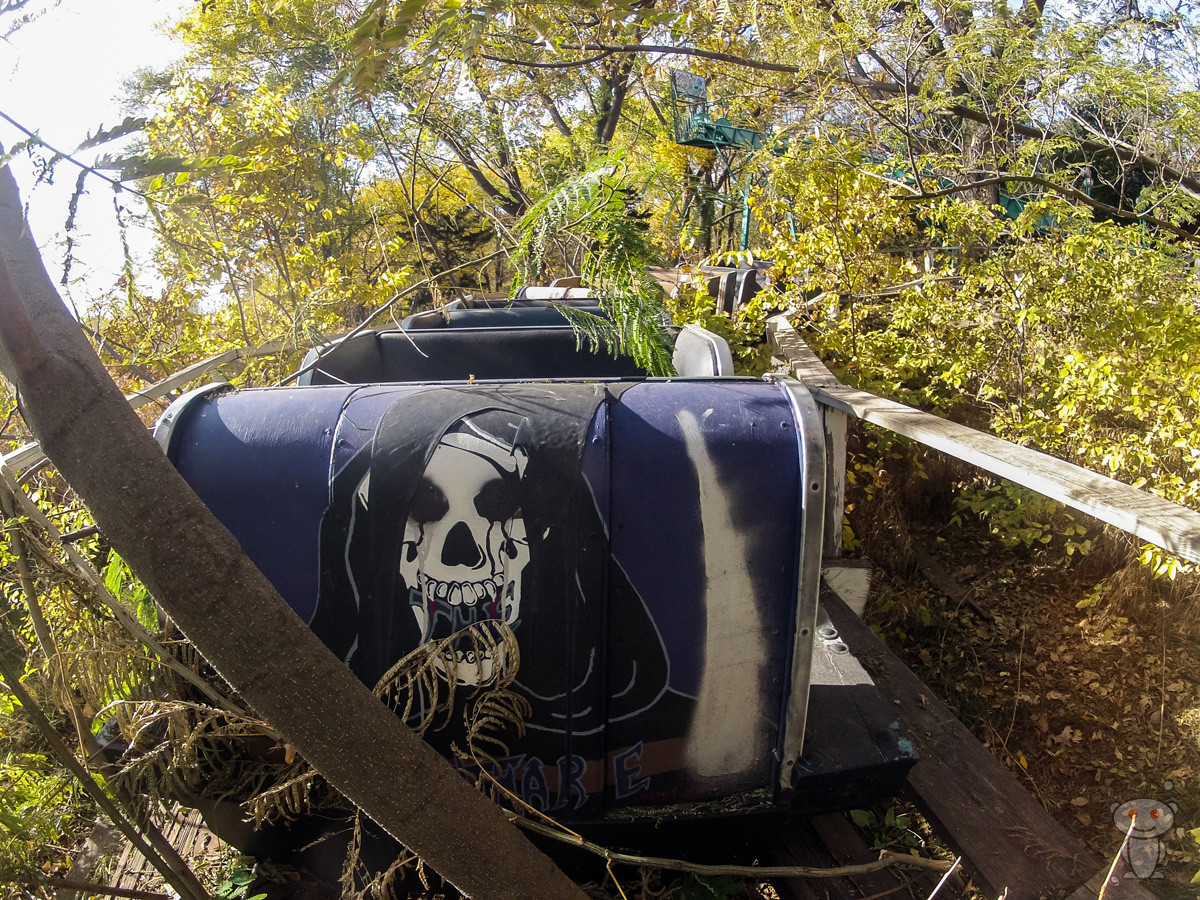

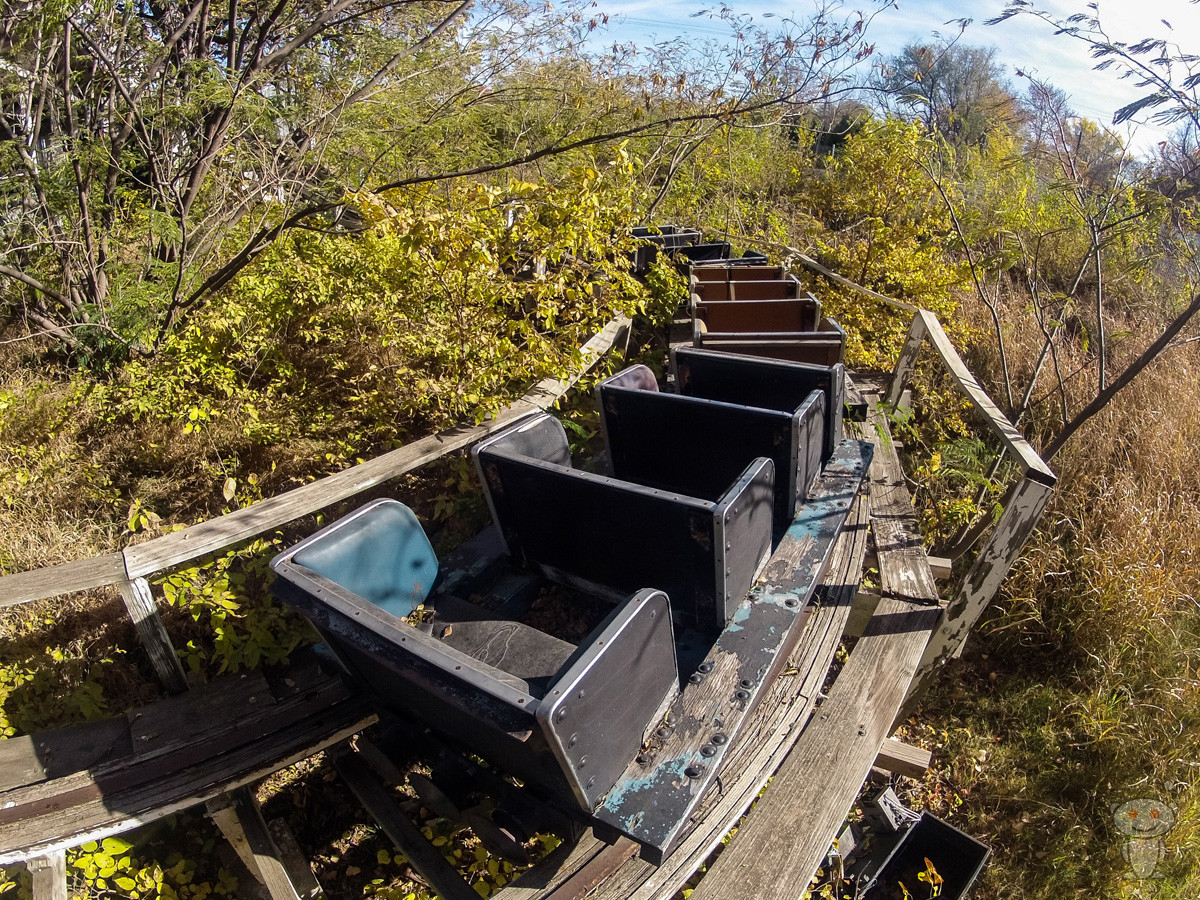
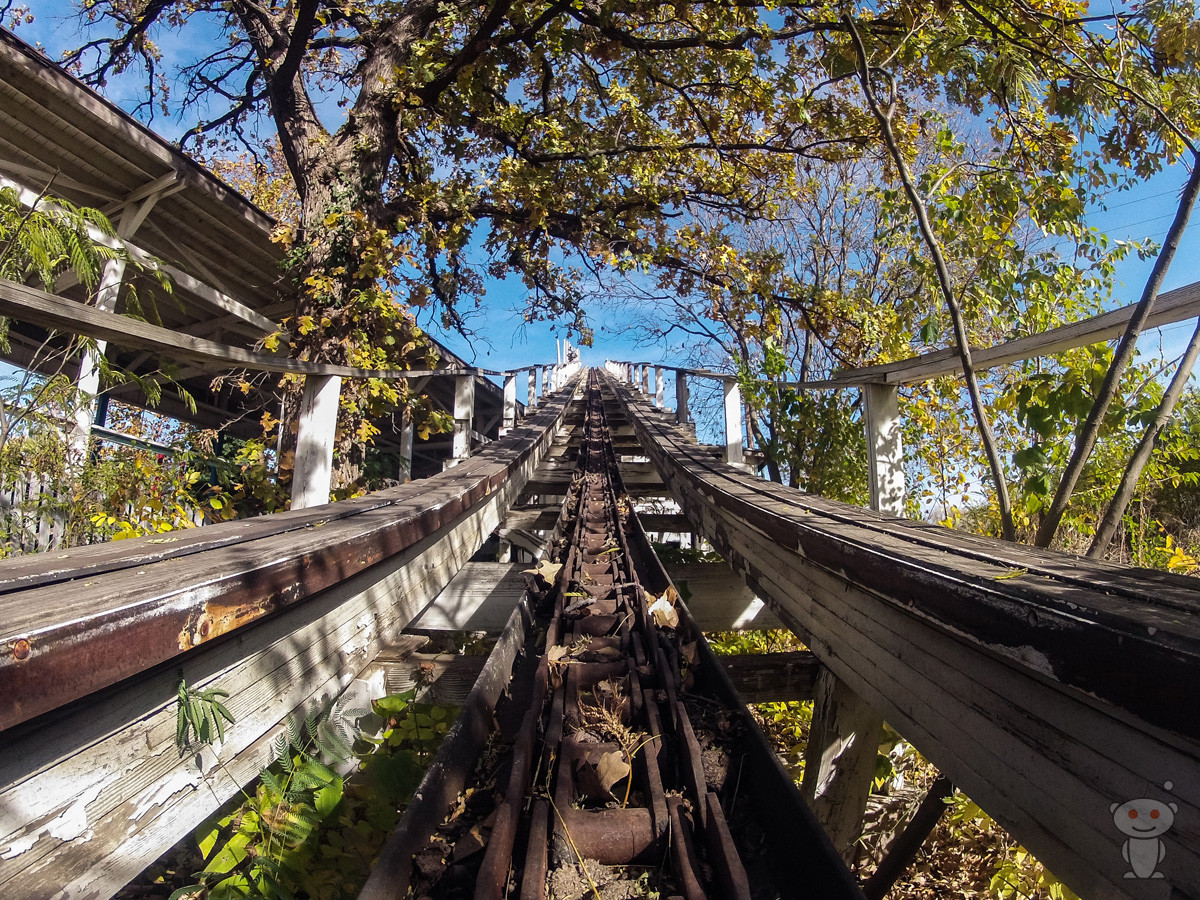
Splendid China, 1996
‘Florida Splendid China, a $100 Million theme park which opened in 1993 on 76 acres just West of the main entrance to Walt Disney World, brought to visitors the beauty and landmarks of China in miniature form. Accurate scale models of some of that China’s most interesting architectural and cultural sites, peopled with a motionless ceramic population, were scattered along the park’s curving and well landscaped (if not particularly shady) paths. The miniatures included replicas of The Great Wall of China (this version was half of a mile long and built brick by brick), The Terra Cotta Warriors of Xi’an, The Leshan Grand Buddha Statue (in 1/8th scale), The Forbidden City (including a miniature Emperor’s wedding procession), Potala Palace (the spiritual center of Tibet and traditional seat of the Dalai Lama) and more than 50 others representing the diversity of cultures within the region.
‘Florida Splendid China had no rides, no bright lights, and no frenetic action and flashy stunts like you find at the other theme parks in the area. It was designed for relaxation and contemplation of the beauties of the Orient. On the surface, the park was serenity itself — but in the background, if you listened, you could hear the sounds of protest… Florida Splendid China presented a peaceful picture of China as it had once been — the temples populated by quaint, colorful monks, no troops stationed in Tibet, and no tanks in Tiananmen Square. Protestors charged that Florida Splendid China was a tool for propaganda rather than entertainment, and they often staged demonstrations outside the park, and also worked to end school field trip visits.
‘The park’s critics charged that depictions of Tibet’s Potala Palace, Mongolian Yurts, and other landmarks from other cultures as being within China were attempts to legitimize Chinese Communist occupation of formerly independent areas, that the multiplicity of religious sites gave a false impression of religious and cultural tolerance within China when those religions were being oppressed, and that the park was actually owned and operated by the Chinese Government through China Travel Services and was in violation of the Foreign Agents Registration Act. Park officials denied that there was any political purpose to Florida Splendid China. The vice president of China Travel Service told The Orlando Sentinel: “We’re a theme park. Nothing more.”
‘Americans never embraced Florida Splendid China. Unlike its sister park in China, Shenzhen Splendid China, which has been a major success with thousands of visitors each day, the Florida park was rarely crowded. It seemed to have been built for a much greater volume of guests; several restaurants built within the park remained empty and closed. In 2002 the Orlando Business Journal called Florida Splendid China “the theme park equivalent of a ghost town.” On December 30, 2003, the following appeared on the park’s website: “FLASH!!! Florida Splendid China Theme Park will discontinue operations in Central Florida as of the close of business on December 31, 2003.”‘ — collaged
Pacific Ocean Park, Santa Monica, California (1958 – 1967)
‘Purchased in 1956 by CBS and Los Angeles Turf Club, Ocean Park Pier underwent two years of renovations before re-opening as the beloved sea-themed Pacific Ocean Park.
‘When CBS and Los Angeles Turf Club first acquired the Pier’s lease, they proposed a $10 million investment in a nautical-themed park that would compete with Disneyland. In order to make this happen, they hired top-notch amusement park designers and renowned Hollywood special effects artists. New, innovative attractions were created for the Park by over 80 people, who worked on the project for more than a year.
‘Since competing with Disney was an expensive venture, POP owners decided to use a Disney-inspired strategy, procuring corporate sponsors to split some of the exhibit costs. Additionally, they opted to repair and refurbish existing structures and integrate old attractions into the new design. Some of these historic attractions featured at POP included the merry-go-round, fun house, and roller coaster.
‘When it opened, Pacific Ocean Park was ornately decorated with sea-green and white art. The entrance featured fountains, sculptures, and more, and the ticket booth was nestled under a six-legged starfish canopy lined with bubbles and sea horses.
‘When it finally opened to the public on Saturday, July 28, 1958, POP drew a crowd of nearly 20,000 people and dozens of Hollywood celebrities. The second day saw nearly double the attendance with 37,262 guests—enough to cause significant traffic jams in the area. Famously, POP outperformed Disneyland in visitor numbers during its first week.
‘Entering the Park was a spectacle in its own right. Visitors entered the Park through Neptune’s Kingdom, descending a submarine elevator to the oceanic corridors below and emerging at a large sea tank display with sharks and other fish. Visitors could see a massive diorama that featured some of the other local sea life, like artificial turtles, manta rays, and sharks glided by over coral reefs and hanging seaweed.
‘Getting into the Park cost ninety cents for adults, with a slightly discounted rate for children. The fee included access to Neptune’s Kingdom, the Sea Circus, and the Westinghouse Enchanted Forest exhibit, but rides and other attractions needed extra tickets. Eventually, the Park shifted its admissions and ride fee structure, which some believe was the beginning of POP’s decline.
‘The Westinghouse Enchanted Forest and Nautilus Submarine Exhibit were major draws for the Park, even including a 150-foot model of the atomic reactor section of a former submarine. The Sea Circus, which featured dolphin and sea lion shows, was another popular attraction, and the auditorium was home to major rock shows including Ritchie Valens, Sam Cooke, The Beach Boys, and Pink Floyd. There were also two dining and shopping areas for visitors to enjoy meals and hunt for souvenirs.
‘As for rides, POP had a roller coaster, two Ferris wheels, and an artistic carousel, as well as popular attractions like the Flying Dutchman and Deepest Deep, where riders took a fake submarine ride with mermaids and other sea life. Like many amusement parks, simple carnival rides like bumper cars, and a tilt-a-whirl also provided hours of fun to visitors.
‘POP’s popularity lasted about a decade before its closing in 1967. The Park’s second season was worse than the first, and the owners closed it for winter, later selling the property for $10,000,000.
‘The sixties saw rides left in disrepair and a decline in the safety of the surrounding neighborhood. A change in ticket sales to one general admission price without separate ride tickets also contributed to financial trouble. Even bringing in money up front, there were high overhead costs which caused maintenance to fall by the wayside.
‘After changes in ownership and management, POP had a successful 1964 season. However, the city of Santa Monica began its Ocean Park urban renewal project soon after, which led to construction and demolitions near the Pier. The spate of street closures near the Park that resulted from this initiative eventually put POP in dire financial straits.
‘By 1967, POP’s creditors acted on several months of non-payments, forcing it into involuntary bankruptcy. The Park closed on October 6, 1967. Like many iterations of the Pier before it, Pacific Ocean Park later suffered a fire, leaving much of the Park in ashes.’ — pac park.com





Loudoun Castle Theme Park Scotland 2009
‘Loudoun Castle Theme Park, near Galston in East Ayrshire, has shut its doors for good with the loss of 11 permanent and 160 seasonal jobs after its managing director said it was “no longer economically viable”. The theme park, which opened in 1995, featured 25 rides, a farm area and daily live shows. Dutchman Henk Bembom took control of it seven years ago. The combination of bad weather, increased VAT and the imminent opening of new publicly-funded visitor attractions, including the £21million Burns Centre and the £85million transport museum in Glasgow, which will be free of charge, has created a situation where Loudoun Castle Theme Park is no longer economically viable.
‘”Attendance peaked in 1997 at 225,000 but dropped down to 110,000 by 2003,” said Benbom. “I always hoped to achieve numbers back up around 175,0000. It wouldn’t make a huge profit, but it would be sustainable. From the start, we did invest quite a bit of money in new rides. In 2007 we introduced the Barnstormer, an S&S; tower ride, and visitor numbers were on track to surpass our targets for the year, but then disaster struck [Note: A park employee was killed on one of the park’s rollercoasters. The company was cleared of all health and safety charges in 2009]. After that tragedy we ended the season around 155,000 and have never really got above that figure since.”
‘Investment, consulting and project management company Vicon wants to redevelop the castle itself as the “centrepiece” of a development that proposes “a world-class championship-standard 18-hole golf course, clubhouse and educational golf academy, new whisky distillery, homes, retail and a food and drink centre of excellence”. The development would be powered by “clean renewable energy”, with a renewable energy plan being proposed for the site.’ — collaged
The American Adventure Theme Park, Derbyshire, UK (1987 – 2007)
‘The American Adventure was a theme park in Derbyshire, England, quite close to both Nottingham and Derby on the edge of Ilkeston. The park for many years had a number of large white-knuckle attractions, but in 2005 was re-themed as a ‘family’ park aimed at the under-14 market. In January 2007 the owners announced that it would not reopen for the new season, and the rides would be sold off.
‘The American Adventure, built on an area of Country Park which had been subject to deep seam and opencast coal mining, was originally opened in June 1987 with an Old West and Cowboys vs. Native Americans theme. A theme park called Britannia Park had been opened on the site in 1985 but closed after just 10 weeks, insolvent, and its founder Peter Kellard was later imprisoned for fraud.[1] Derbyshire County Council purchased the site in 1986 and sold it to Granada, who in June 1987 opened the American Adventure, heralded as Britain’s Major New Theme Park. Initial attractions at the American Adventure included the two-drop log flume, the runaway mine train, the Buffalo Stampede roller coaster, a pirate ship, and a ferris wheel.
‘1989 saw the opening of the Missile roller coaster, a Vekoma Boomerang coaster which was at the time voted the number one roller coaster in the UK. Shortly before this there was the Canadian themed addition of the Rocky Mountain Rapids. In the same year, the Assault Course round in the junior version of The Krypton Factor (known as Young Krypton) was filmed. In 1993 the log-flume was extended to have a third drop and was renamed from “Cherokee Falls” to “Nightmare Niagara”. The extra drop made it the tallest log-flume in the UK throughout its operational life (this record has now reverted back to Loggers Leap at Thorpe Park as this ride used to hold the record before the new drop was added). In 1995 the Iron Wolf roller coaster (now located in a Polish theme park and known as the tic tac tornado) was installed, which broke away from the American theming of the park and was instead themed around the ITV gameshow Gladiators.
‘From 1996 onwards the park began to decline, and in 1997 Granada sold it to a company called Ventureworld which was headed by John Broome, a former Alton Towers developer. During the reign of Broome as owner of the park the only noticeable change was the addition of minor or upcharge attractions, and the slow decline of many of the park’s attractions.’ — travelshorts

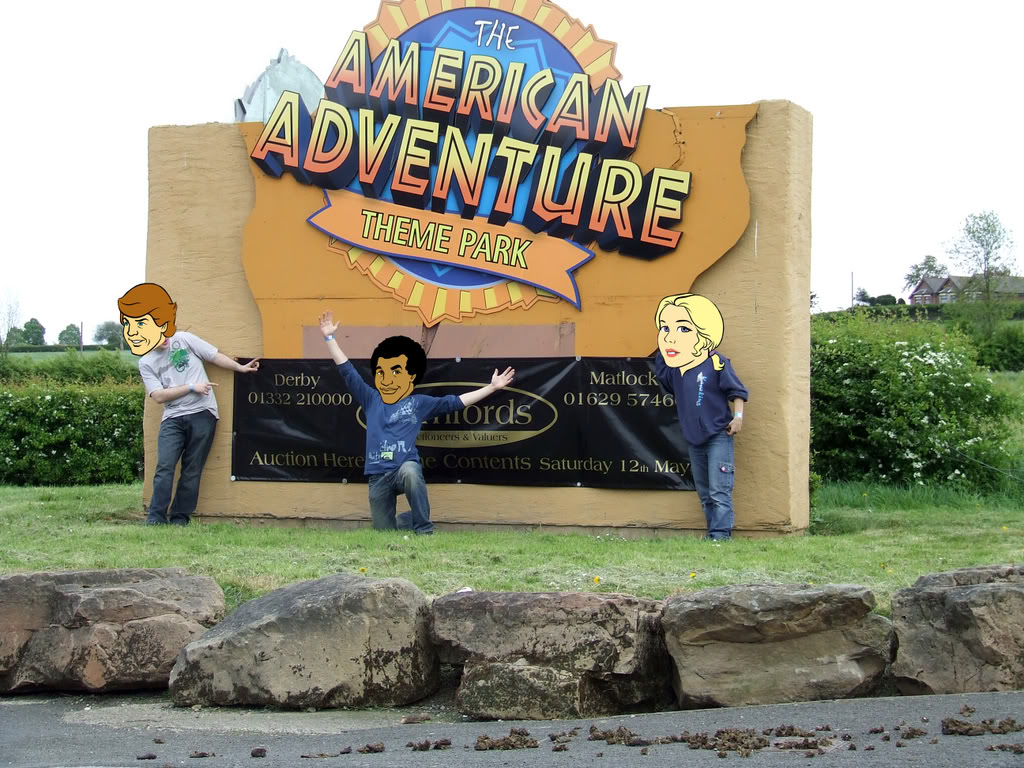

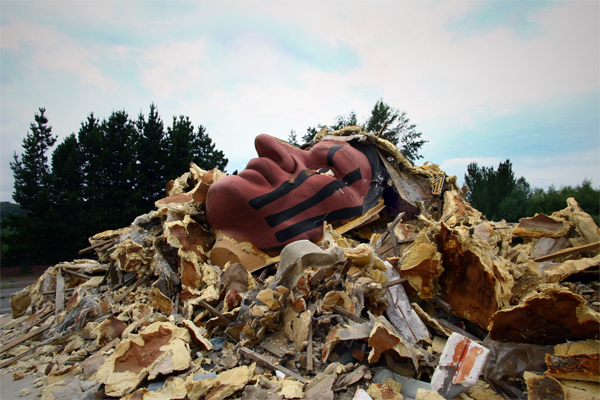
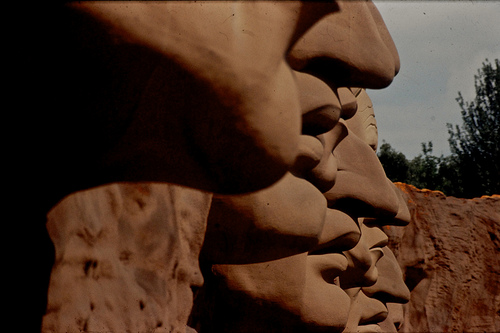
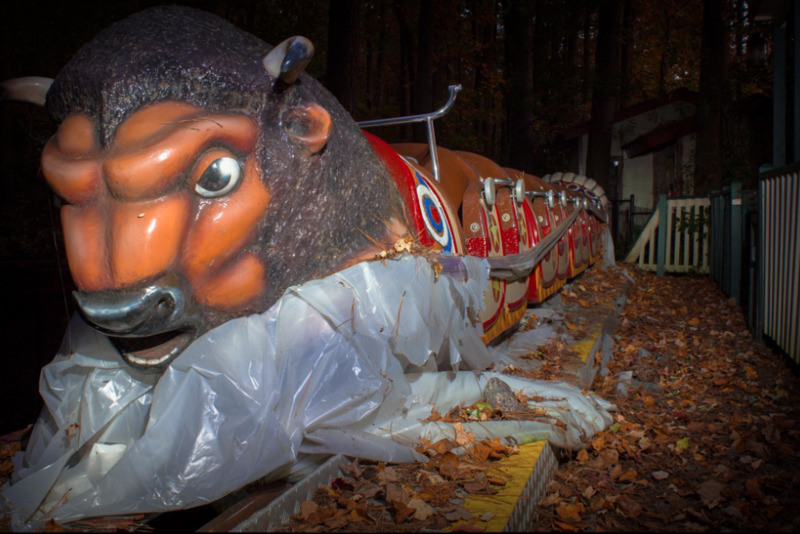

Enchanted Forest, Ellicott City, Maryland
‘The Enchanted Forest officially opened on August 15, 1955, following a preview party the afternoon before — one month after Disneyland Park’s opening. Appealing mostly to families with small children, the park had a nursery rhyme theme. The park featured fairy tale buildings and characters, but no mechanical rides originally. Track rides were added later, including the Alice in Wonderland ride with teacup-shaped cars, a Cinderella’s castle ride with mice for the cars, the “Little Toot” boat that took children to Mount Vesuvius for giant slides, and the Jungleland Safari which was driven by open Land Rover-type vehicles. Unlike many other attractions of the time, the Enchanted Forest was integrated from the day it opened.
‘Admission was one dollar for adults and fifty cents for children. At opening, the park was 20 acres (81,000 m2), but it later expanded to 52 acres (210,000 m2). At the height of its popularity, the Enchanted Forest welcomed 300,000 children per summer season. the park closed for the first time in 1989. After turning more than half the land (primarily the parking lots) into the Safeway-anchored Enchanted Forest Shopping Center in 1992, JHP Development reopened the park for the 1994 summer season, predominantly for children’s birthday parties. The park was permanently shuttered in 1995. Part of the John Waters movie Cry-Baby, released in April 1990 and starring Johnny Depp and Ricki Lake, took place in the Enchanted Forest. It also appears in the horror movie Fear Of Clowns.’ — collaged
Chippewa Lake Park, Chippewa Lake, Ohio (1878 – 1978)
‘Chippewa Lake Park is an abandoned theme park once located in Chippewa Lake, Ohio, Medina County. It operated from 1878 through 1978, after the final owner, Continental Business Enterprises closed it due to lack of attendance. After the park’s closure, its rides and structures were left largely untouched and unmaintained for over 35 years.
‘In 1875, Edward Andrews organized a picnic ground and beach under the name Andrew’s Pleasure Grounds. The park operated with some success, but its condition deteriorated. With the addition of a steam boat and the park’s first rollercoaster, the amusement park was brought to life. The initial roller coaster had to be manually pushed up the track following each ride.
‘Mac Beach acquired Chippewa Lake in 1898 and improved the park immensely. He also placed a ban on liquor sales. Mac’s son, Parker Beach, managed the park during its boom years: The Roaring ’20s. During that decade, the first modern coaster was built at the park, designed by Fred Pearce. Originally named the Big Dipper, it became better known as simply ‘the coaster’. The park also featured a live band-stand seven nights a week. The park opened the wooden roller coaster in 1925. The coaster was a fairly small roller coaster, estimated to be about 50 Feet high. The coaster operated until the park closed in 1978. The coaster stood abandoned for over 30 years until it was demolished in 2010. The Beach family kept the park running successfully into the 1960s. Eventually, Chippewa Lake would feature three roller coasters, flying cages, a Ferris wheel, carousel, Tumble Bug, ballroom, and many other rides.
‘Chippewa Lake was acquired by Continental Business Enterprises in 1969, and the company developed plans to transform the park into more of a summer resort; these plans, however, drew very little public interest and funding and most of the plans were scrapped. The park would later close in 1978 – which was the park’s centennial season – under the company’s ownership, owing to factors like competition from nearby Cedar Point and the now defunct Geauga Lake amusement parks, as well as the decline of steel and rubber production in the surrounding areas. It was largely unknown to the public that the park’s 100th season would be its last; the park closed rather secretly without any big media coverage or massive public outcry. When the park shut down, former owner Parker Beach made a request to his family that he be buried there when he died, to which his family agreed.[citation needed] The site where Beach’s body is buried in the park is unknown. In the 2007 documentary, “Welcome Back Riders”, at the very end, it said Be respectful if you try to find Parker Beach’s Grave. Let him enjoy his park in peace. …It’s by the roller coaster.
‘After the park’s closure in 1978, the land the park was situated on was left largely untouched and all of the rides and buildings were left standing, in which up until the end of the 1990s the park remained in fairly good condition and some of the rides were still usable. By the 2000s, however, large trees began growing through rides like the coaster and the park’s ferris wheel, and several buildings had collapsed or been damaged by the effects of the elements. All of the structures in the park became rusted and rotted without any hopes of repairs.’ — Wikipedia

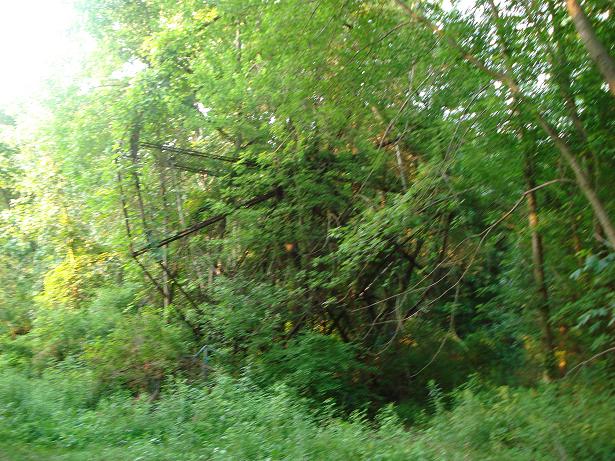
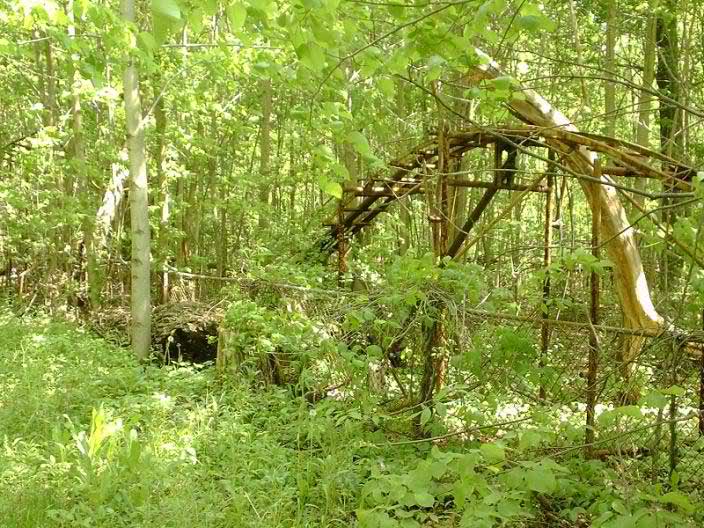
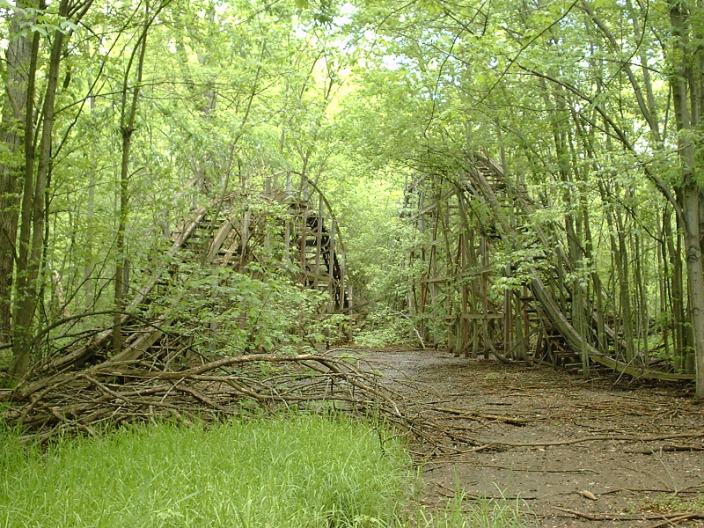

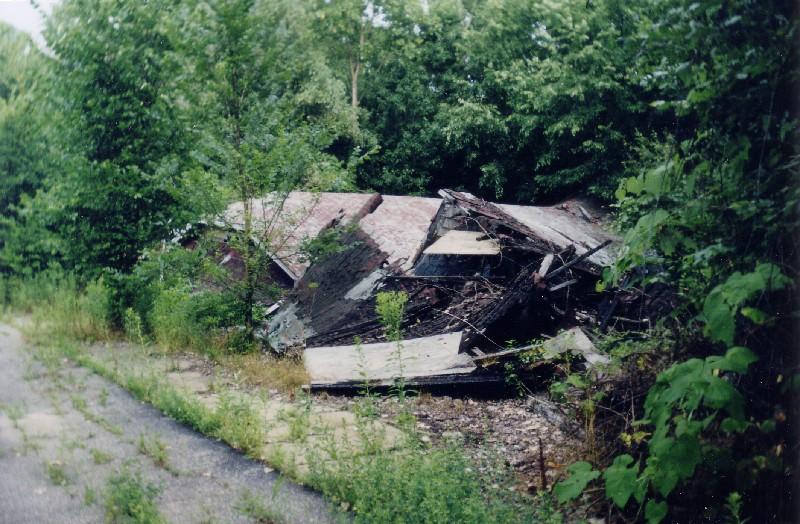
Welcome to Vollmar’s Amusement Park
‘Richard “Mike” Hofner, former owner of Vollmar’s Amusement Park, one of the last of a handful of privately owned parks in the Toledo area of Ohio that closed in 2000, died of cancer Wednesday in Hospice of Northwest Ohio, Perrysburg Township. He was 92. Mr. Hofner guided the amusement park for more than 25 years, drawing crowds to enjoy its vast facades and rides along the Maumee River in Wood County between Waterville and Grand Rapids.
‘The park kept going despite at least one brief closing because of rising costs and competition from bigger parks. Yet he never seemed to grow weary of the difficulties, Martha Rupp, his daughter, said. Even in his 80s, Mr. Hofner supervised preparation of barbecue chicken, served beer, and mowed the grass of the 66-acre park. He also hired students from Otsego High School for summer jobs.
‘He bought the park in 1963 and his late son, Joseph, ran day-to-day operations for many years. The seasonal park, which operated seven days a week during the summer, opened on Mother’s Day and usually closed in early October. “He could be bullheaded sometimes, but he knew things had to be done a certain way – and that’s the way he wanted them done,” his daughter said.’ — collaged
Miracle Strip Amusement Park, Panama City, Florida (1963 – 2004)
‘Miracle Strip Amusement Park opened in 1963 with the Starliner Roller Coaster as it’s main attraction. Located across from the beach in Panama City, the park did not look like your average theme park and resembled the traditional seaside boardwalks of the past. The park featured many of the typical rides you would find at any carnival nowadays including scramblers, bumper cars, a carousel, and a haunted house. Some of the rides, such as the Abominable Snowman and Dante’s Inferno, were enhanced by placing them in dome structures and adding lighting effects, temperature changes, smoke effects, and music.
‘In 2003, it was announced that the park would close the following year due to lack of interest, loss of money and increased expenses to keep the rides maintained and running. Many of the rides were either sold off or disappeared, some being found and reopened under the same name. Any of the remaining structures or rides that weren’t sold were later demolished.
‘In 2008, Pier Park opened down the street where Miracle Strip once stood, open-air dining, entertainment, and shopping mall. Teddy Meeks, a wholesale jeweler, sought to put a carousel in Pier Park. After much searching, in 2009, he found not only a carousel but the original carousel from Miracle Strip which has been sitting in storage on the old Miracle Strip property since 2004.
‘After a year in operation and officially named “Miracle Strip“, Pier Park approached Meeks with the idea of adding a Ferris wheel. He looked for the park’s original Ferris wheel which he found out was moved to Chattanooga, Tennessee and was also not for sale. Deciding on the next best thing, Meeks found an exact make and model of the ride in California. Soon after, the last two remaining rides from the Miracle Strip property, a 1985 Zamperalla Balloon Race and a 1952 Allen Herschell Red Baron plane ride, were bought and added to Pier Park.
‘In October 2010, news outlets reported that Teddy and Jenny Meeks along with two other partners had bought the Starliner roller coaster for $2 million and has started efforts to rebuild it. More recent sources though have reported that the Starliner sits in storage in Palmetto, FL and is still up for sale as of September 2012. The current owner, Ridewerks, have considered donating the Starliner train to the National Roller Coaster Museum but also said that another possible option was that Pier Park was still interested in maybe one day rebuilding the coaster.’ — Abandoned Florida

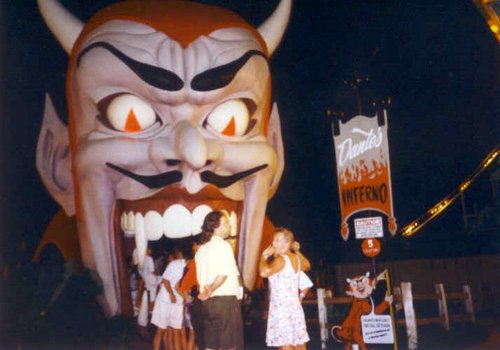
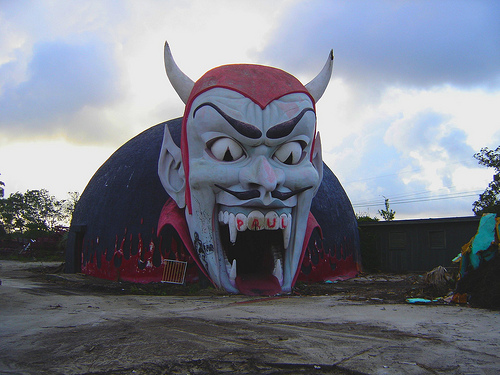
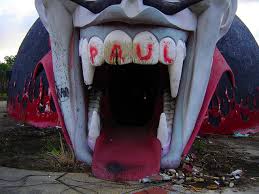
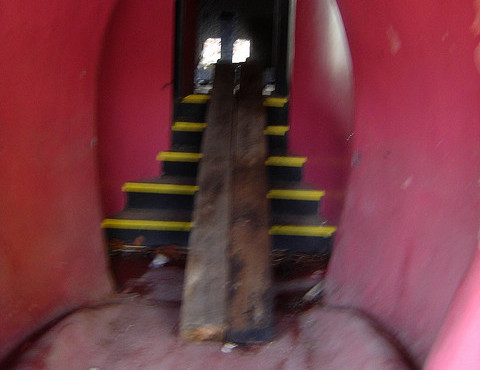
The abandoned and never finished “City of Toys”
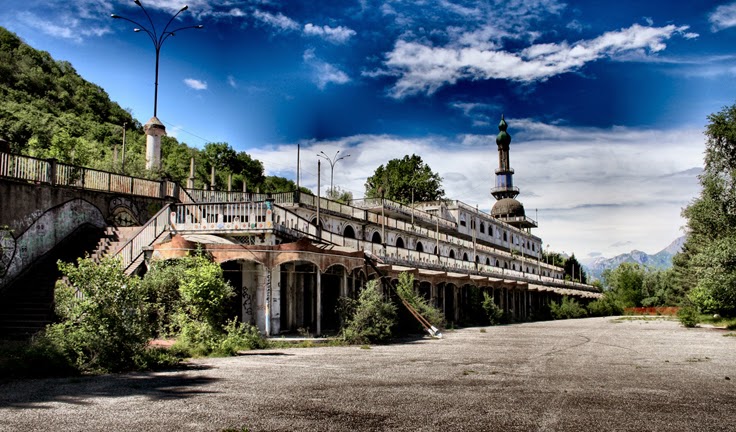
‘Until 1962, Consonno was a small medieval town with an economy based on harvesting chestnuts and celery. It population never exceeded 300, and, though just an hour from Milan, its location in the hills of Brianza was remote, secluded, and peaceful.
‘Then came Mario Bagno. The count and entrepreneur saw Consonno and had a vision: City of Toys. The glitzy resort town he had in mind would be a Las Vegas-style ode to wealth and hedonism, with casinos, bars, clubs, shopping arcades, and hotels.
‘Bagno handed over 22.5 million lire and Consonno was his. The first indication many of its residents received about the impending development was the sound of a bulldozer making its way toward their homes.
‘Bagno razed every building but the church, its graveyard, and its chaplain’s house. He shifted the hills around to improve the view, dynamiting rock and building new peaks. The topographical alterations caused two landslides in 1966 and 1967, but construction work continued.
‘A man of mercurial moods, Bagno frequently changed his mind on how he wanted the City of Toys to look. His commercial gallery, topped with a minaret, resembled a mosque. It sat alongside a Chinese pagoda and a medieval castle. Occasionally Bagno would erect a building and then demolish it, his tastes having shifted during its construction.
‘The new Consonno enjoyed a brief heyday during the late ’60s and early ’70s, but it was not yet finished. Bagno envisioned a zoo, a racecourse, basketball courts, and mini golf. The additions never arrived — a landslide in 1976 buried Consonno’s access road, severing supply lines and prohibiting visitors.
‘The half-finished City of Toys has been a ghost town ever since. Bagno did make one last attempt to revive Consonno — in the 1980s he tried to convert it into an aged care facility. Construction began, but faltered, and when Bagno died in 1995, the idea was abandoned for good.
‘Consonno is officially a trespass-free zone following a 2007 rave that left its buildings damaged, trashed, and covered in graffiti.’ — Slate

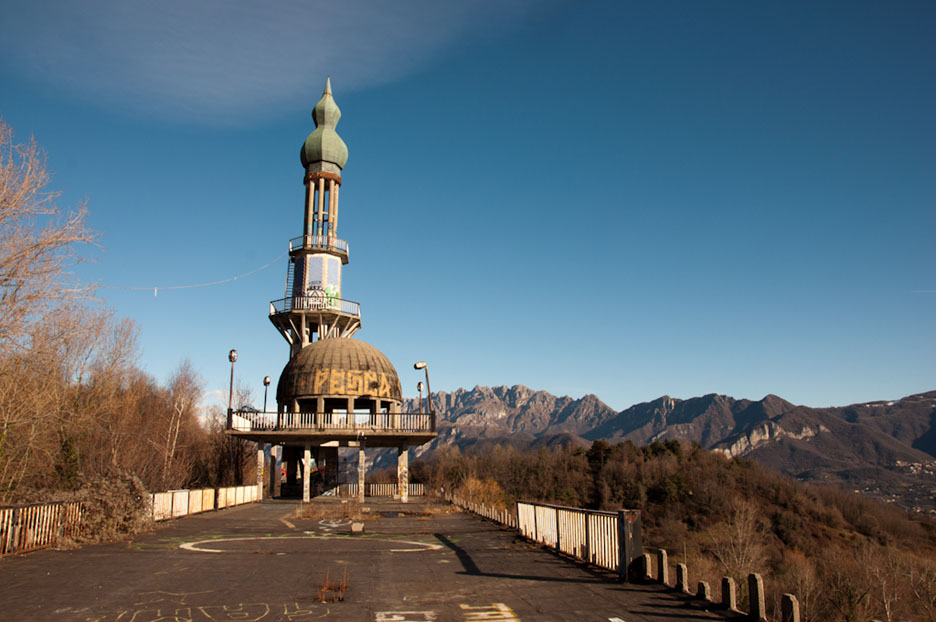
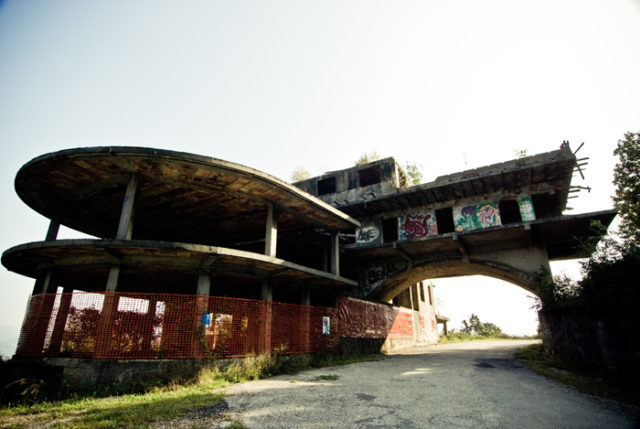
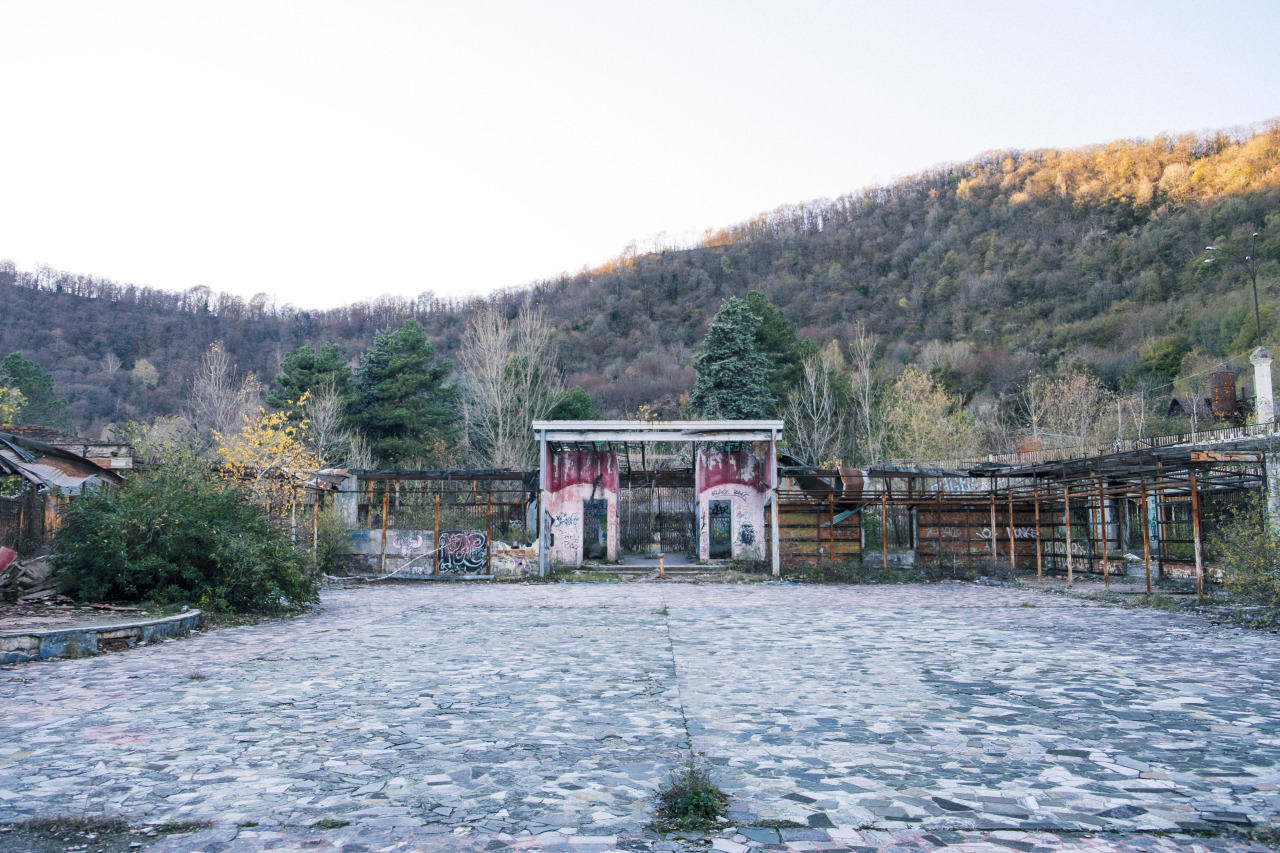
Disney’s River Country, Bay Lake, Florida (1976 – 2002)
‘Disney’s River Country was a huge deal when it first opened back in June 1976. It was the first of the multi-billion dollar corporation’s water parks — and it made quite a splash. In its first few years, the park was filled with excited families and squealing children speeding down slides. It was described as an “old-fashioned swimming hole” with “a twist of Huckleberry Finn”, complete with rocks and man-made boulders.
‘In its first year, the theme park averaged 4700 guests per day.
Susan Ford, the 18-year-old daughter of President Gerald Ford, took the first official ride down the famous Whoop ’n Holler Hollow. The creators wanted to give families the sense that they were actually swimming in an open lake, and created a massive artificial mountain to suck up lake water, filter it and then empty it through the park’s slides into the pool.
‘A large rubber “bladder” was installed, inflated 15cm above the surface of Bay Lake, to separate it from the water park and ensure that unfiltered water could not pollute the swimming pools. Despite this, in 1980 tragedy struck — an 11-year-old boy from New York died in the park after contracting amoebic meningoencephalitis, a rare infection caused by amoeba found in Florida freshwater. The amoeba swam up his nose and attacked his brain and nervous system. The disease is almost always fatal, but Disney was largely absolved of blame.
‘According to an Associated Press report from 1980: “The two officials said there was no reason to blame Disney World for the tragedy because the amoeba can breed in almost any freshwater lake during hot weather. Officials have said there is no epidemic of the disease in central Florida, where all four cases were detected. Disney officials said there was wasn’t much they could do. “‘We are of course concerned and sensitive to any potential health or safety hazards to our guests,’ said Disney spokesman Charles Ridgway. ‘I don’t know of any action that could be taken as a result of this.’ “Ridgway emphasised that Disney World conducts a thorough program of water quality control in co-operation with health officials,” reported AP.
‘In 1982, disaster struck again. A 14-year-old boy from North Dakota drowned in the resort after dropping into the lake at the end of the Whoop’n Holler slide. The boy’s family sued the corporation, saying there was no sign posting about how deep the water was. After one of the park’s lifeguards attested that dozens had to be rescued from the ride each day, the family received $US375,000 in compensation. In 1989, a 13-year-old teenage boy from Florida also drowned at the park.
‘Every year, the water park closed in September for the winter and reopened in April. But in 2002, that changed. “Walt Disney World’s first water park, River Country, has closed and may not reopen,” the Orlando Sentinel reported that year in April. Since then, the resort has been left to rot — filled with overgrown moss, dilapidated offices and abandoned rusty water slides covered in vines. Disney World spokesman Bill Warren stated that River Country could be reopened if “there’s enough guest demand” — but no one has set foot inside since.’ — news.com.au
Big World Land, Sweden (? – 2012)
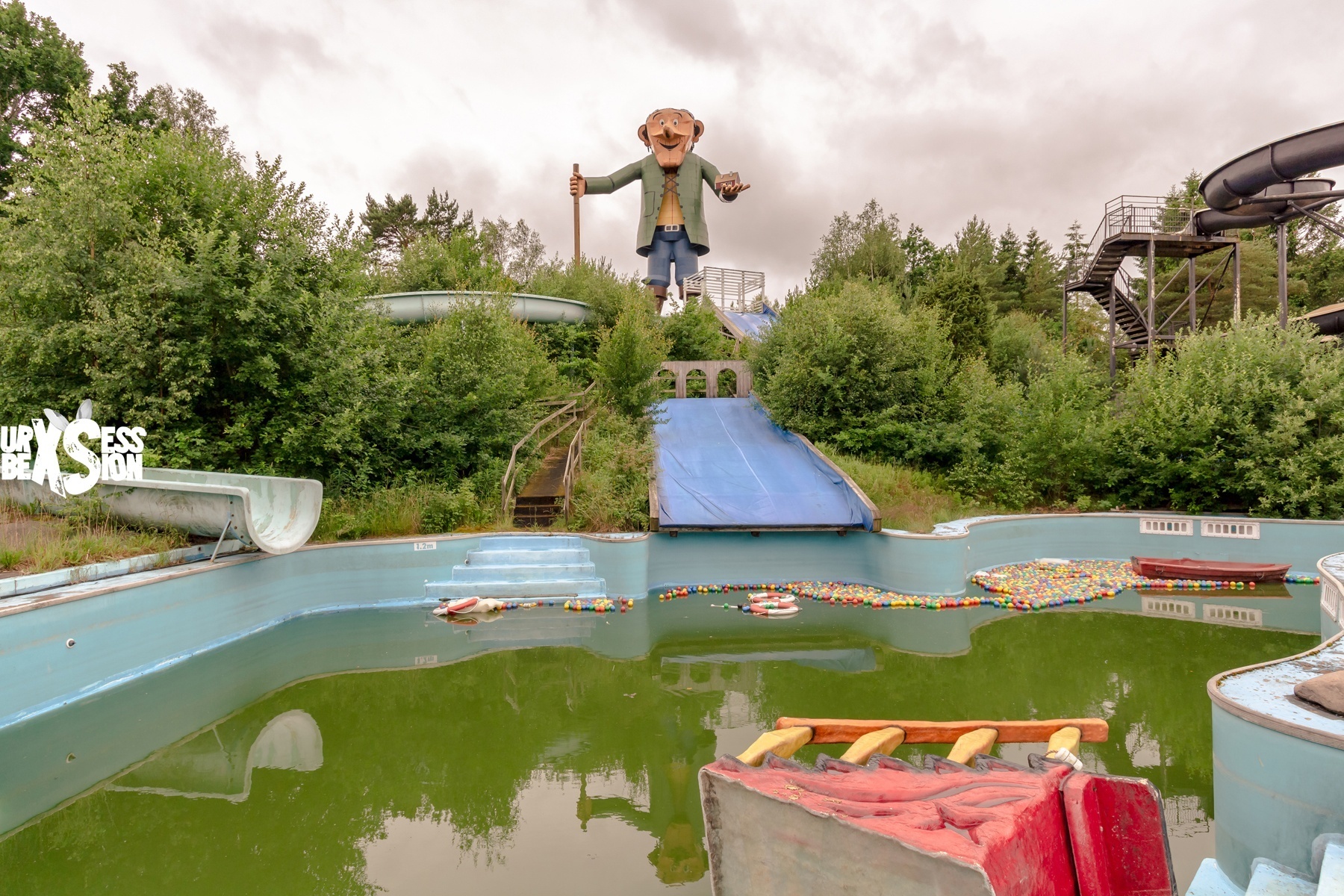
‘Welcome to the Big World Land in 2016, several years after its closing time. We were very surprised to discover a lot of things. We saw a watchman at the entrance so we had to be discreet and try not to attract attention. We walked across a small forest, it should be the zoo before because we saw several animal pens. We were glad to discover a huge statue with an exceptional view of the park. This is one of our best exploration in an abandoned park, without Ferris wheel but much less touristy than Spreepark. We were alone to go up the steps of the slide. We walked in the “Wild West” part of the park with saloons and many statues to finally arrive in the Pirate’s Island. Very well preserved, this abandoned amusement park was a beautiful exploration, which was stopped by the Jeep of the watchman. We left the park and run to the exit to save all our 200 photos.’ — Urbex Session

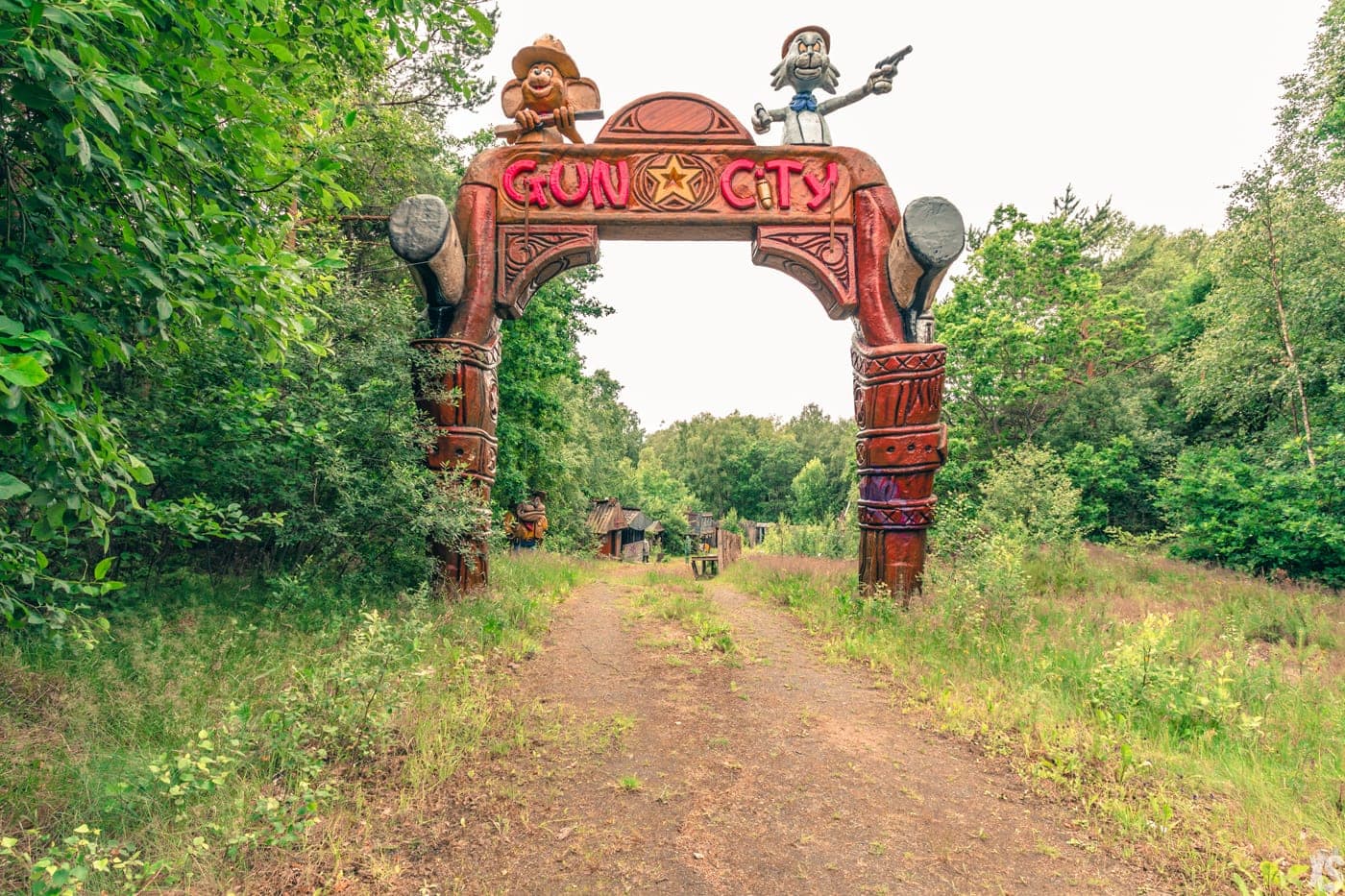
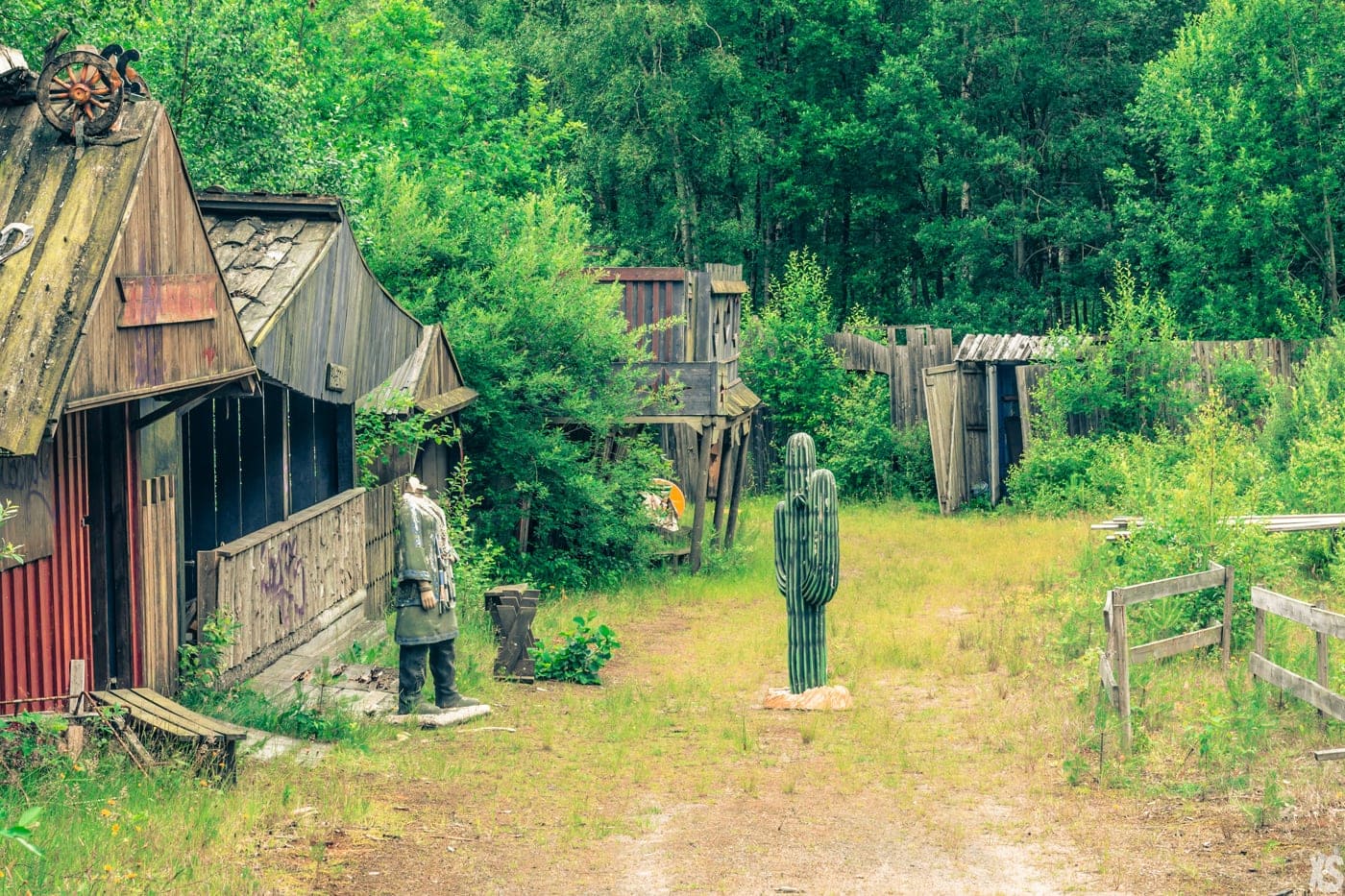
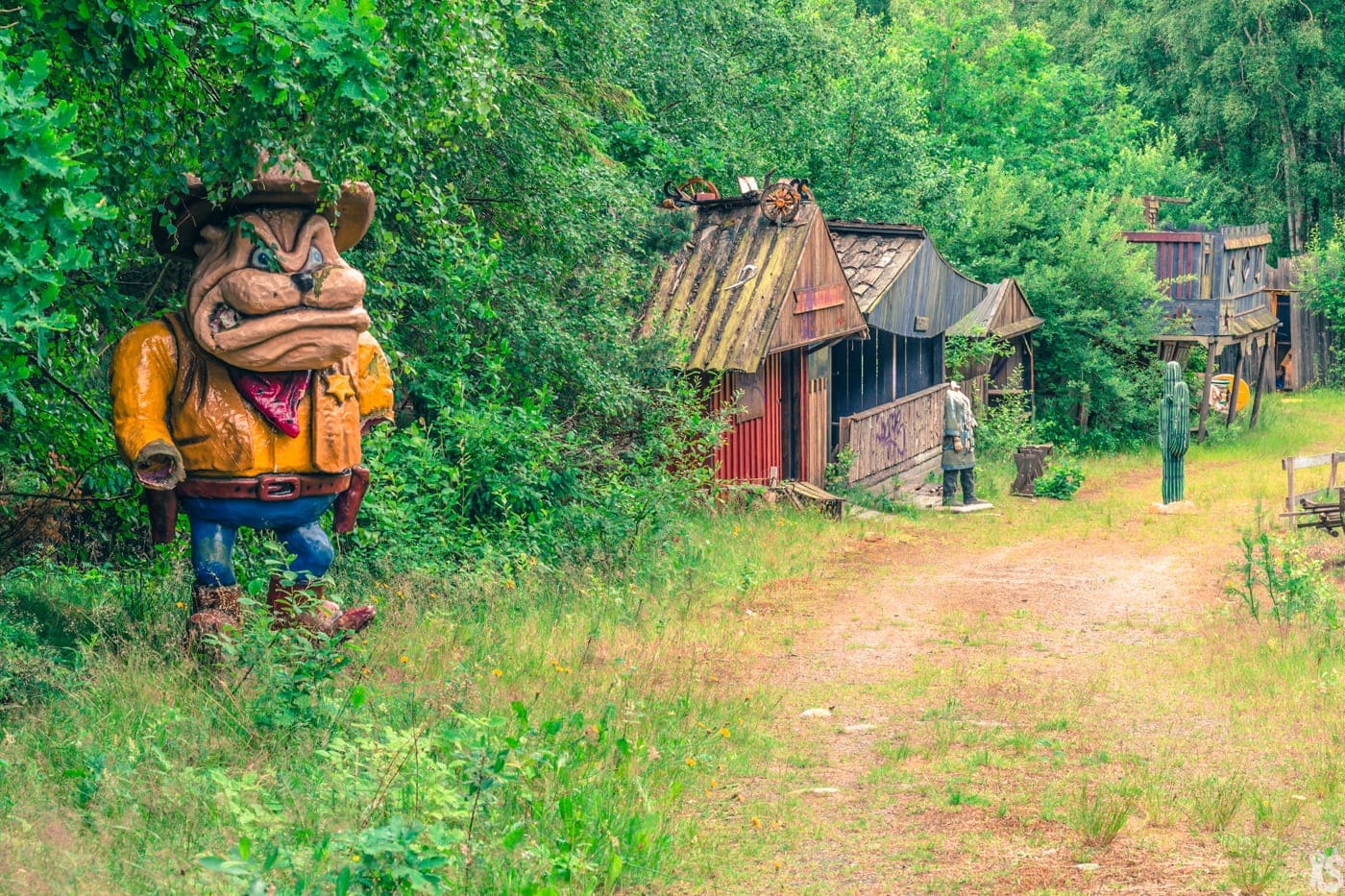
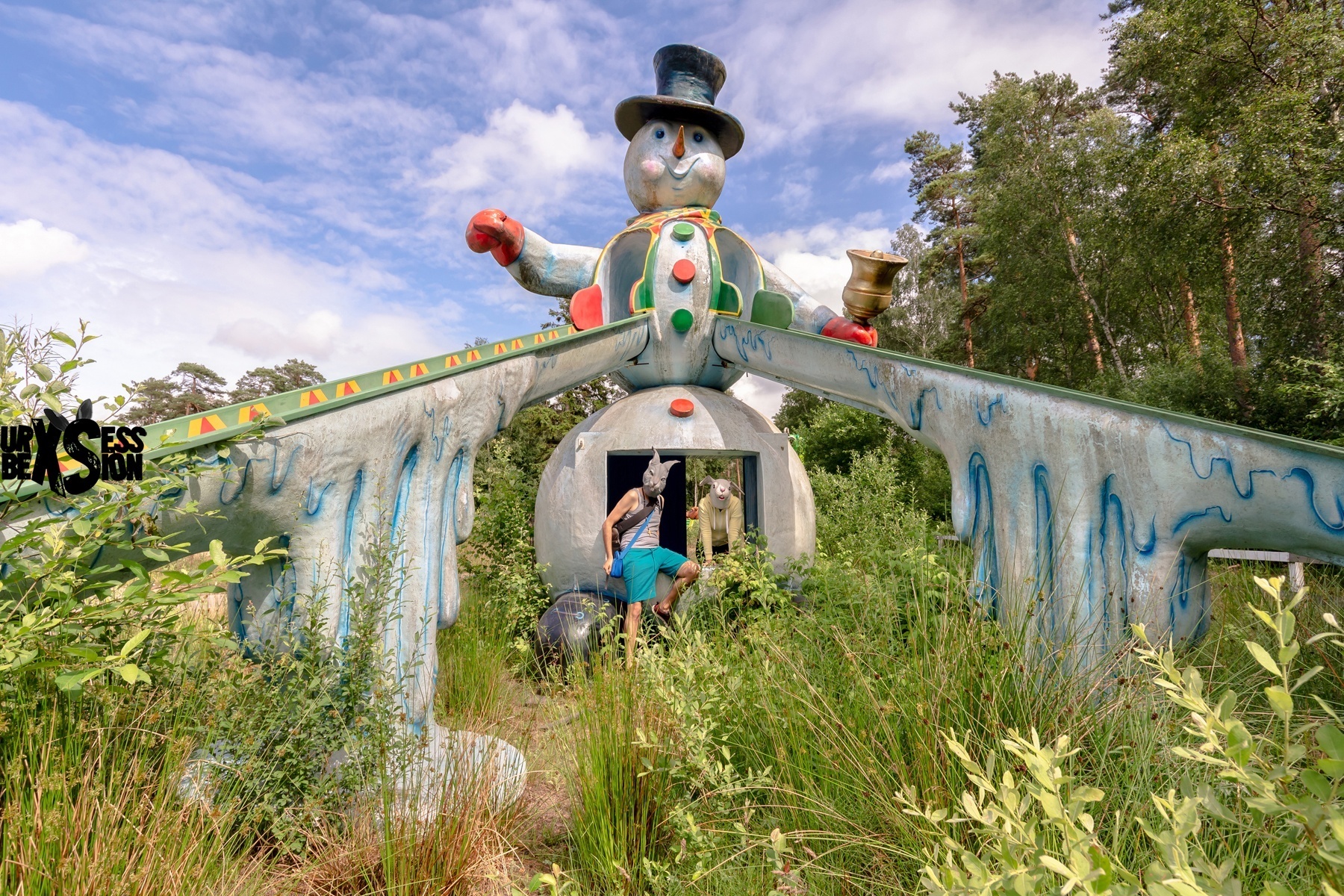


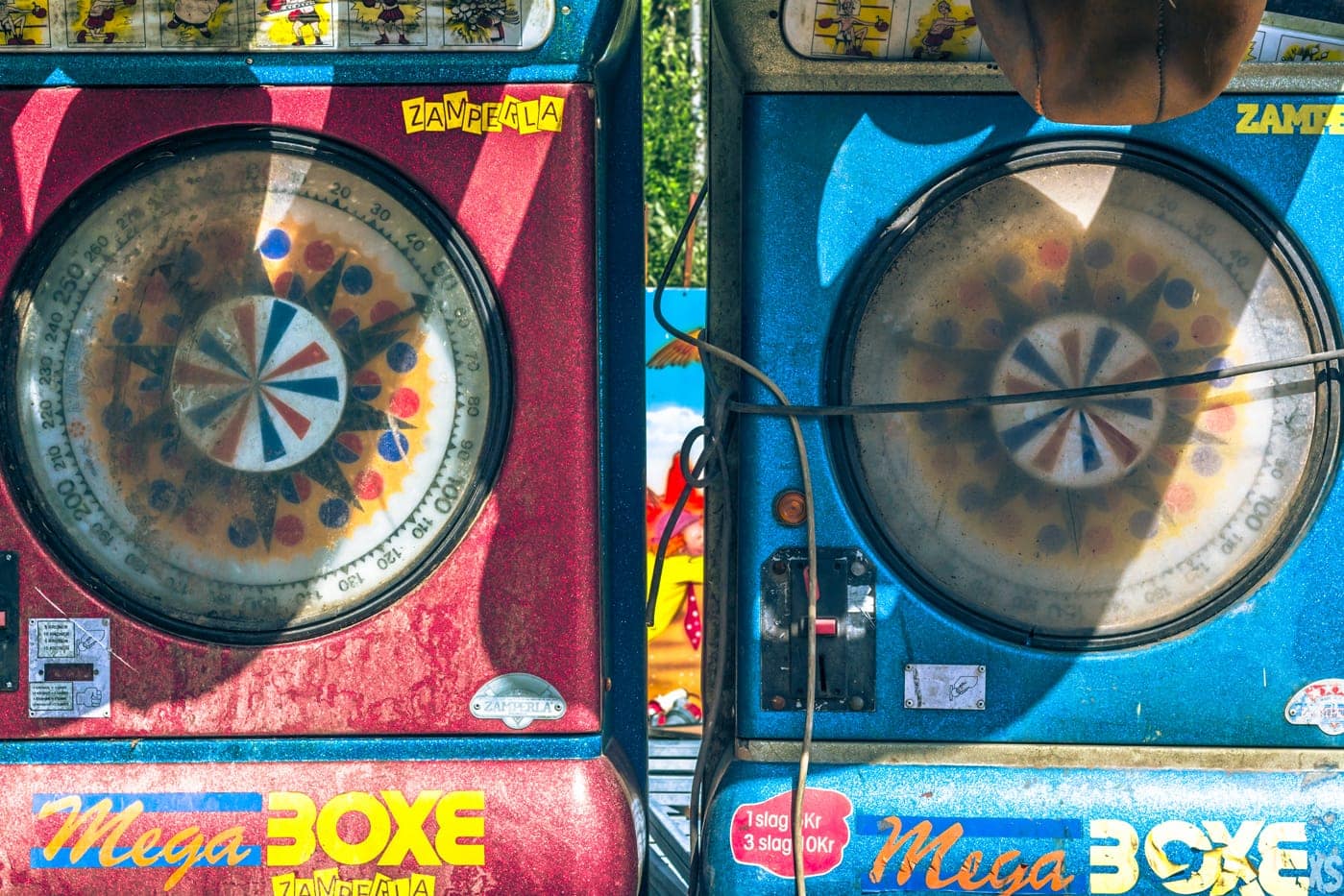
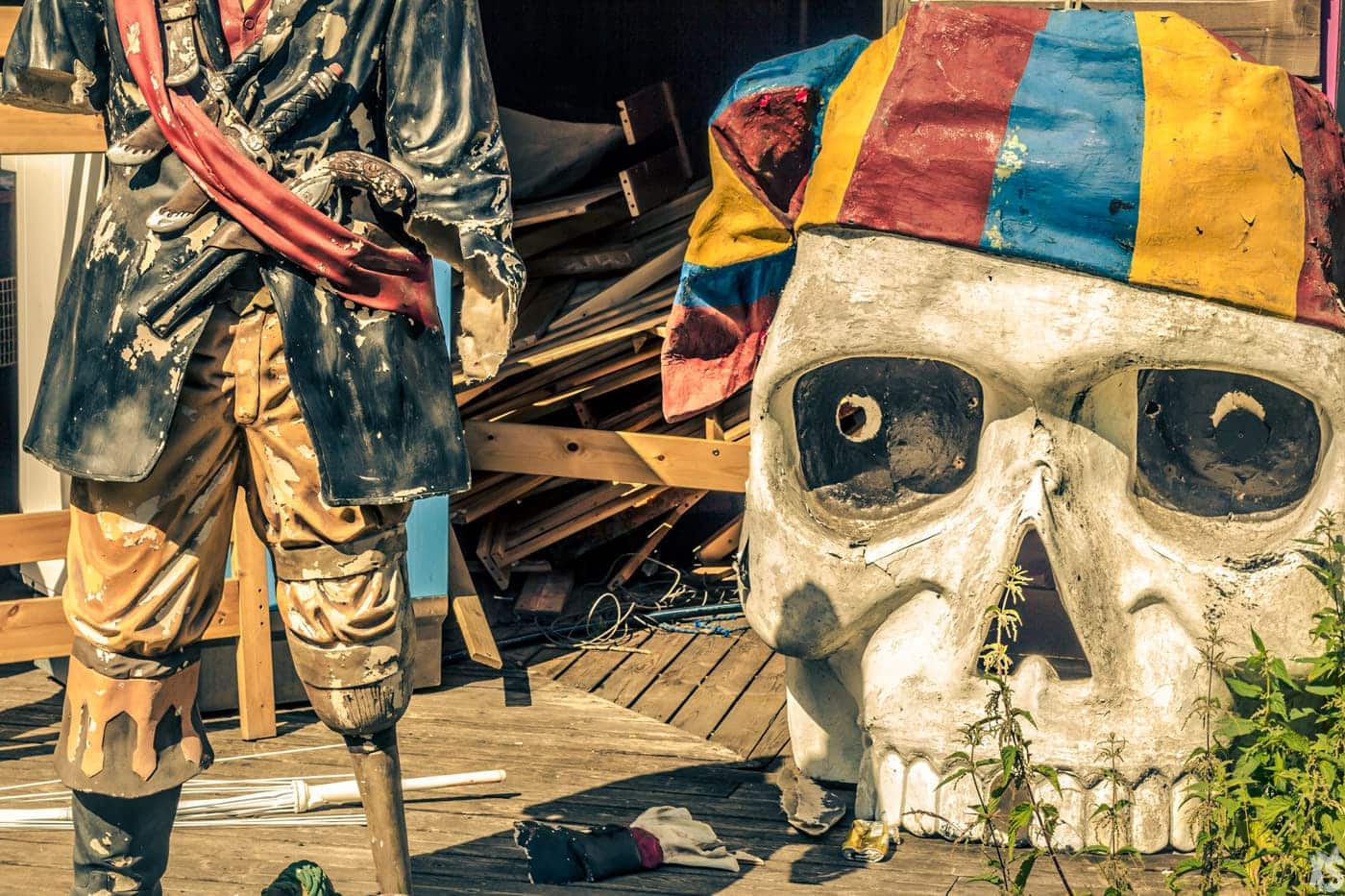

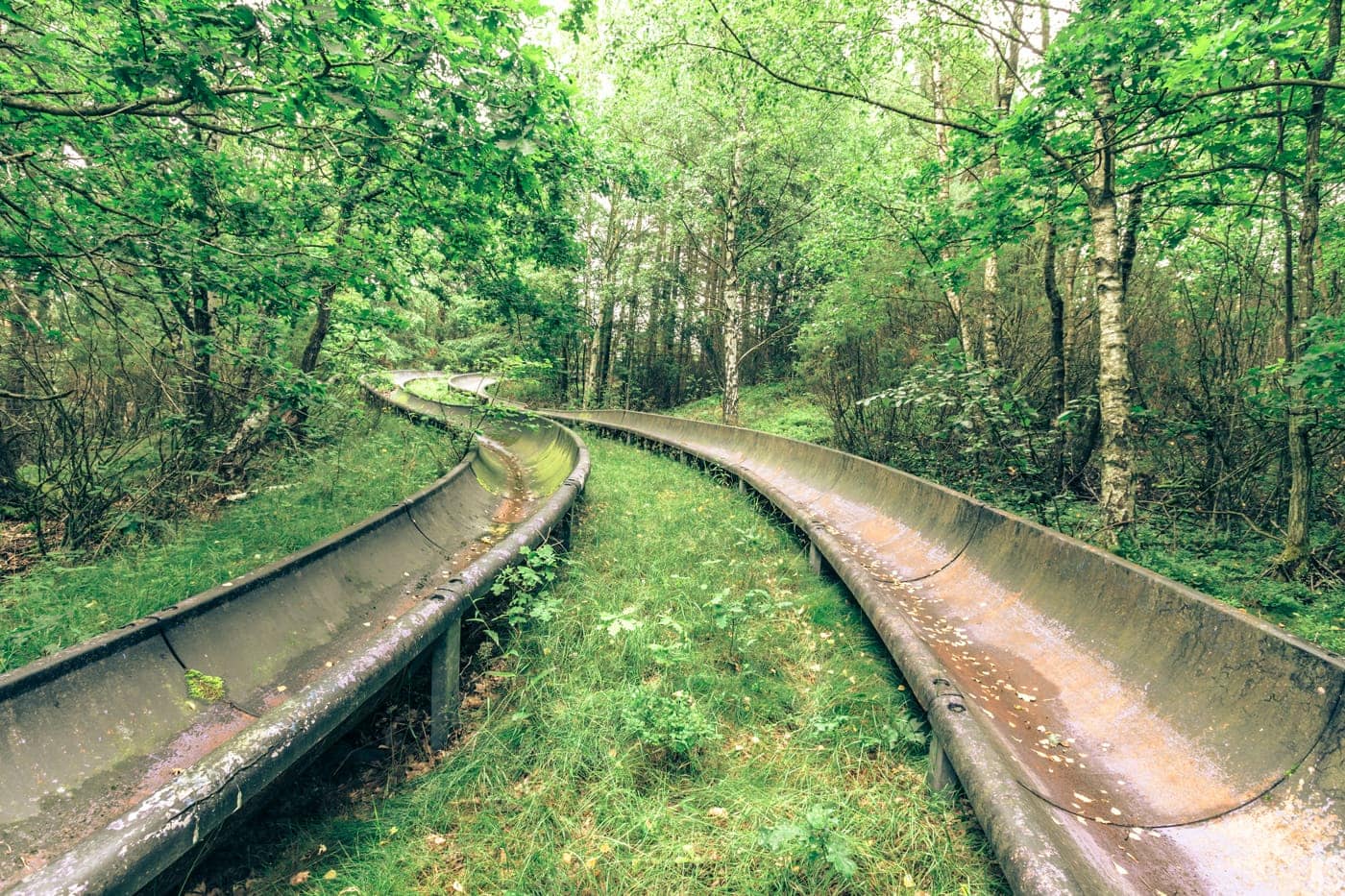
Dadipark, Moorslede, Belgium (1950 – 2008)
‘Originally built in 1950 as a playground for the children of pilgrims visiting the nearby basilica, by 1980 the schoolyard equipment had been replaced with amusement rides and opened to tourists and those in town on pilgrimage. For a time the park enjoyed great success, entertaining a million visitors during its peak year, and for a time containing what was, at 800 meters, the longest monkey bridge in Europe. However things took a turn for the worse as the increasingly rundown rides became more and more hazardous. Finally in 2000 a boy lost his arm on the Nautic Jet ride, and by 2002, the site was closed down for “renovations.” Unfortunately these improvements never took place and the park was simply abandoned, never to reopen.
‘Today the park lies in shambles, slated for demolition since 2011. Most of the larger rides were demolished, but many of the buildings and simpler attractions remain. Where Dadipark was built to cater to local Catholic children and religious tourists, the rusting site only ended up catering to pilgrims as urban explorers. Unfortunately Dadipark was demolished, and plans are underway to turn the site into a hiking park.’ — atlas obscura
Wonderland Amusement Park, Beijing (never opened)
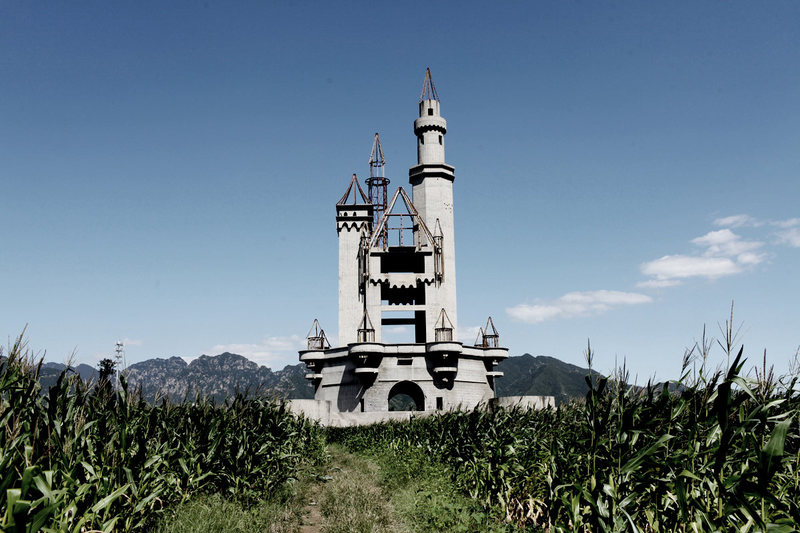
‘The Wonderland Amusement Park on the outskirts of Beijing was planned as the biggest theme park in Asia, spanning a massive 120 acres. Located in Chenzhuang Village in the Changping District, the never-completed amusement park was just 20 minutes away from Beijing. It was conceived by the Thai-Chinese property developer Reignwood Group with hopes of drawing from a population of over 20 million people. Reignwood already had significant interests in China including the distribution rights to the Red Bull energy drink. It was hoped that Wonderland could become the flagship property of the company’s portfolio.
‘Alas, it wasn’t to be. In 1998, construction was stopped suddenly and the site left abandoned. Rumours about why the builders left swept the country with some saying that the area was haunted while others suggested the finding of mass graves. The truth was a case of simple economics. Those involved in the project simply ran out of money and when additional sources of income were not forthcoming, Wonderland was left in a half built state, decaying and derelict.
‘The original idea for the park was to create a Disneyland style theme park for China and the castle at the centre of the theme park is reminiscent of the Sleeping Beauty and Cinderella castles in Disney parks around the world. Other themed areas had similarities to Disney’s theme parks and it was suggested that the designers simply copied the designs thinking that the Disney company wouldn’t be able to protest against their copyright usage in China. What they weren’t expecting was that Disney were in talks with the government of Hong Kong to build a park there. The agreement was signed in 1999, a year after China’s Wonderland became abandoned and unfinished. Disney were later to announce a park in mainland China with Shanghai Disneyland beginning construction in 2011. It opened in June 2016.
‘In the years following the abandonment, the farmers in the area surrounding the proposed theme park simply reclaimed the land for themselves and began raising livestock and growing crops amongst the unfinished attractions. The remains of the castle, which was to be the centrepiece of the amusement park, towered over them leaving a stark reminder of the Wonderland that never was. Being the the largest and tallest structure in the theme park, the castle suffered most due to exposure to the inclement weather of the region with parts of the partially built building collapsing into rubble as the years progressed. The other buildings such as a medieval themed village began to become overgrown with vegetation and nature began to reclaim the area. Many superstitions arose from the story of why the builders left, including that of ghosts haunting a burial site which had been unearthed during construction. Economically though, the amusement park simply seems to have been a victim of China’s property bubble.
‘Attempts were made to revive the project in 2008 but those efforts stalled. China’s Wonderland was eventually demolished in 2013. Attempts by Reignwood Group to build a luxury goods supermarket never materialised and eventually, a shopping mall called The Badaling Outlets was opened in Summer 2015.’ — World Abandoned



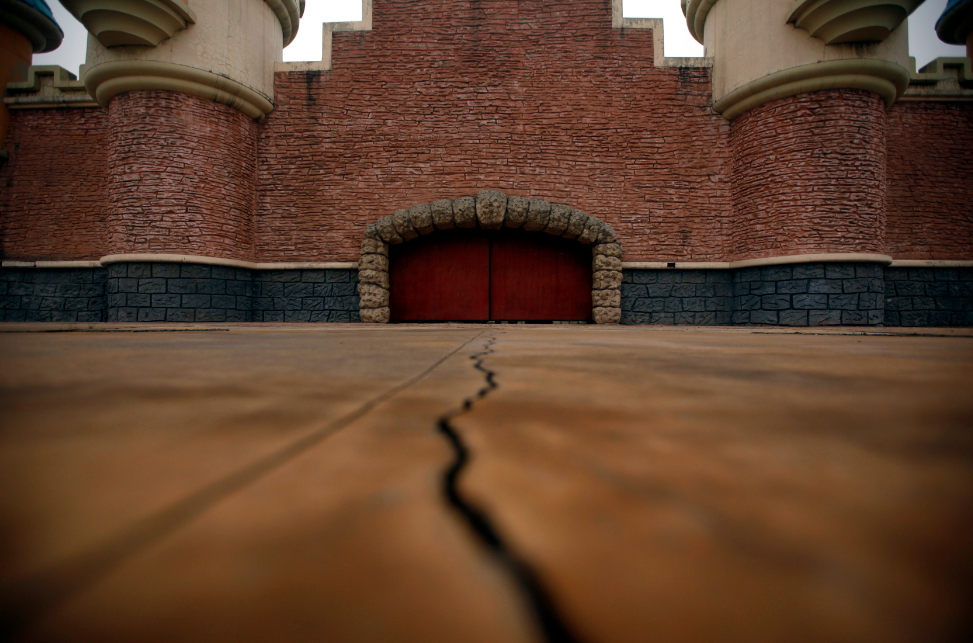

Taman Festival, Bali (1997 – 1998)
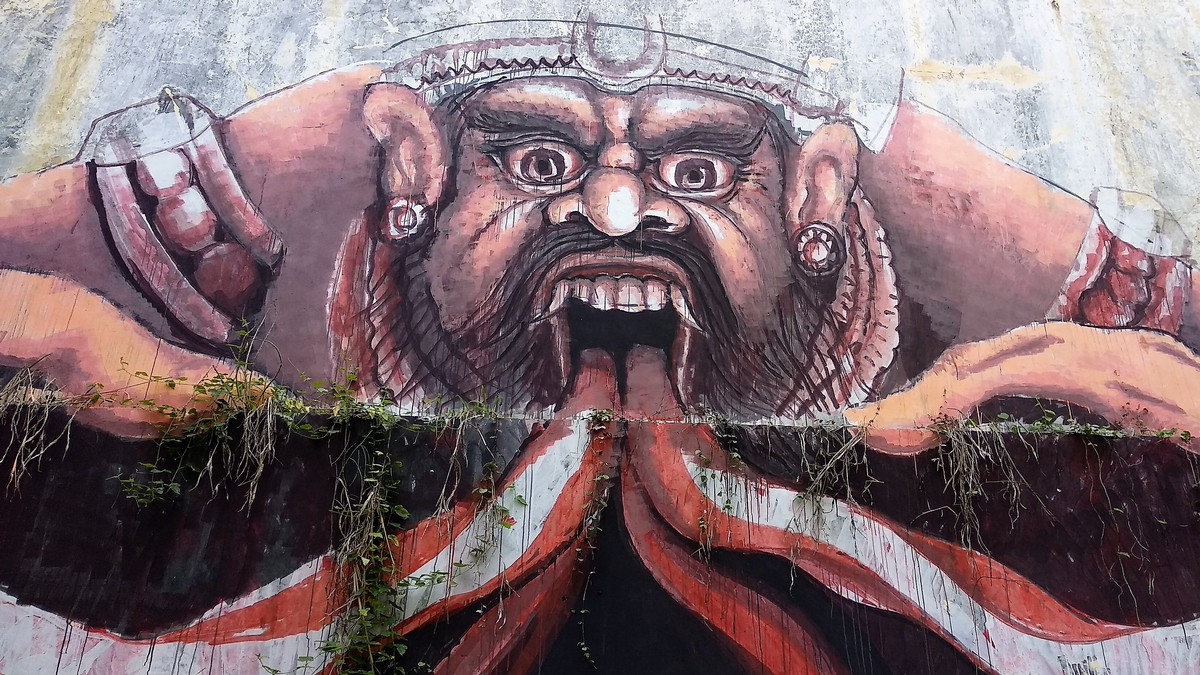
‘Taman Festival in Sanur, Bali was created with the vision of giving Disneyland a run for it’s money. So, you can only imagine the grand scale of things planned for this amusement park. Taman Festival was briefly opened in 1997 featuring the biggest inverted coaster in the world, 3D cinema, biggest swimming pool in Bali, majestic laser shows and heck even a huge volcano and crocodile pit!!!!
‘As destiny would have it though, in less than a year on Friday the 13th (no less), Taman Festival’s million-dollar laser equipment, was struck by lightning.
‘In the time of economic recession, no one could really afford to rebuild, take ownership or bear the losses. Since then, it has just remained a vast, vacant, piece of land.
‘As for the crocodiles, it is said that they were simply left to roam free. Some villagers fed them chickens regularly but slowly they turned into cannibals. No one really knows what happened in this huge abandoned space in the last two decades, but I would say there is something off-putting here, for sure.’ — Wander with Jo


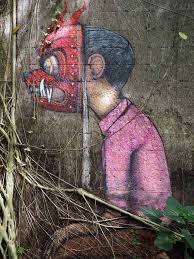


Glück Kingdom, Hokkaido, Japan (1989 – 2007)

‘The once grandiose Glück Kingdom in Hokkaido, Japan, was inspired by the tales of Jacob and Wilhelm Grimm, the Brothers Grimm, who published folklore stories including Little Red Riding Hood and Hänsel and Gretel.
‘The attraction that opened in 1989 was designed to allow Japanese people to get a glimpse of what medieval Germany was like, without leaving the country. To guarantee its authenticity, replica German statues and materials were imported, including a 400-year-old granite pavement from Berlin and Dresden.
‘Guests could stay on the resort in bedrooms much like Disney World. But since closing a decade ago, the attraction is now far from a fairy-tale. The once majestic mansion is now mould-ridden, the furniture covered in fluorescent fungus and the castles are covered by overgrown forestry.
‘It was very impressive to see they copied German buildings and even moved old buildings from Germany to Japan. They made exact duplicates of statues with casts and certificates in Germany and shipped them to Japan. They even imported 400 year old granite pavement stones from Berlin and Dresden to reproduce the medieval pavement, everything had to be perfect.
‘They hired German professionals and specialist to build and paint the German buildings. It must have been like the Sleeping Beauty fairy tale in real life, it even has a fairy tale castle. It would have been a crazy project, which involved a lot of money and effort, but now certain parts are very decayed.
‘Vines are growing against the castle and there is mould, grass and fungus taking over the interior. Offices with the green mould carpet were one of the most impressive parts, everything was still in the exact same place as when it closed. There unopened letters, cups of coffee and other things to suggest this.
‘The castle has 67 different hotel rooms from one to five star ratings, all in a Baroque style, with fine custom made Italian furniture. Some rooms are still in a good condition while other are completely decayed. Artists and builders were hired to ensure the site replicated Germany as closely as possible. Some copies of iconic places include: Schloss Bückeburg, Hanau’s city hall, Röder Gate of Rothenburg, Prince Maximilian’s villa and Grimm’s House.’ — Caters Clips
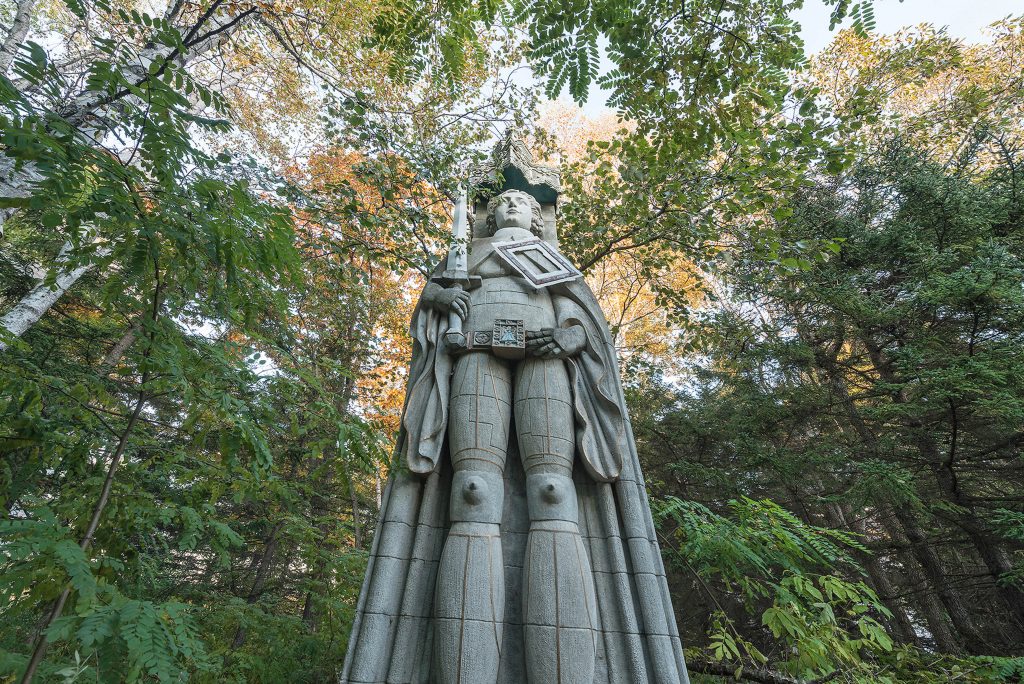

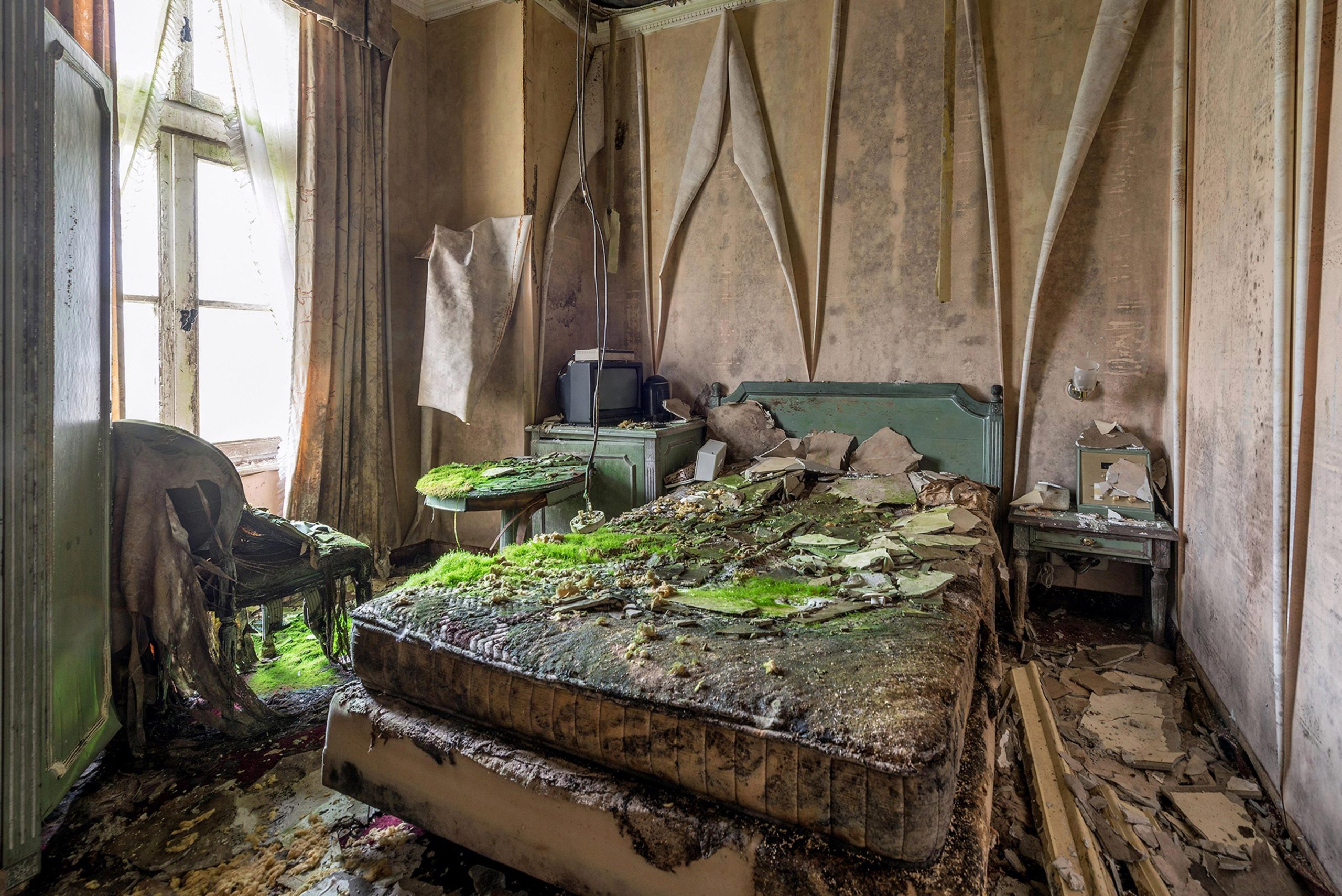



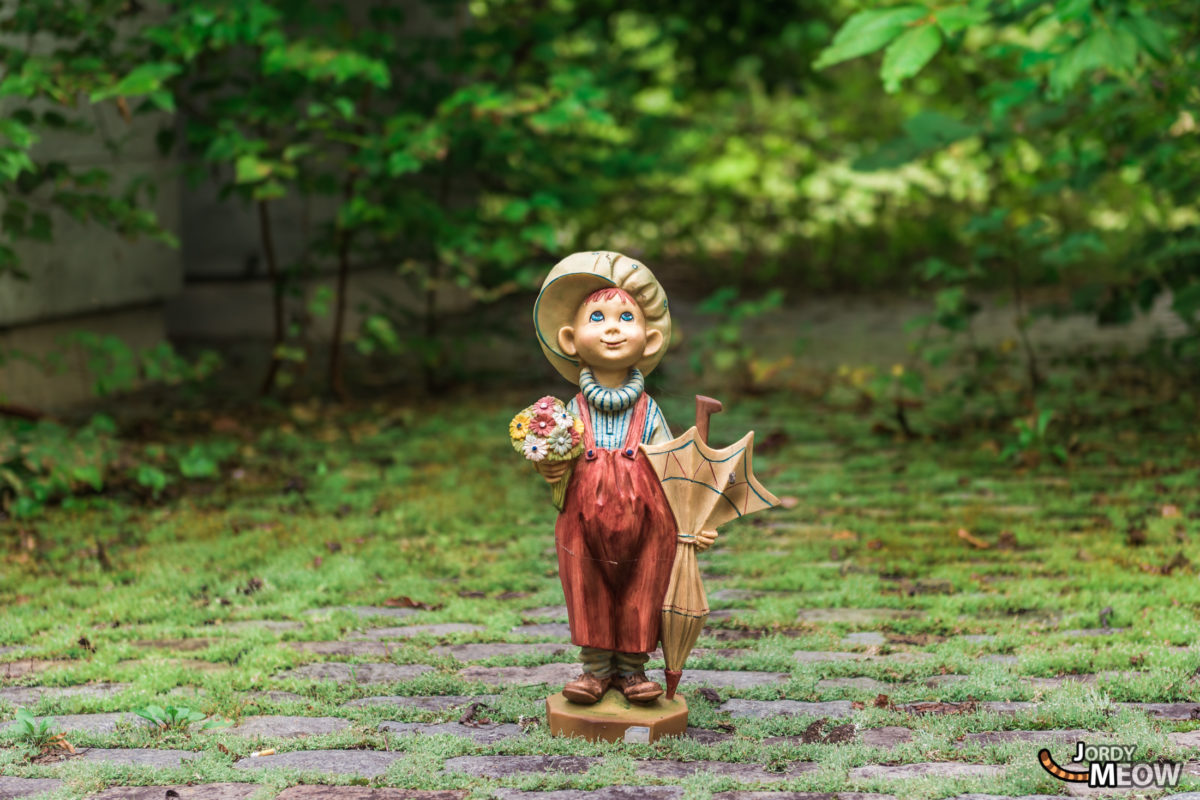
*
p.s. RIP Eli Hayes ** Armando, Hi. Oh, yeah, I’m a smoker. Yes, I like the Marais very much. I lived there for a year, and I wish I still did. I hope you have a very good day! xo ** Niko, Hi, Niko! It’s very nice to see you! I’m very happy to talk about Tim if you ever want me to talk about him. Great news about your novel! Publishing your first novel is really an amazing thing. Wow, cool. I look forward to reading it. What you say about it is extremely intriguing. Do you know when it’ll be published? Uh, yeah, being asked to conventionalise. I’ve been going through that that with a recent project to a degree that’s been soul destroying and pretty much killed the project off. Well, as long you’re confident that your systems are working as well as you need them to, it should be okay. It’s always hardest with the first novel. After you’ve published one, publishers tend to start to accept that you know what you’re doing and trust you, and/or they accept that you’re serious and cease trying to shape your work into something easily recognisable. Or it can go that way, and does. Main thing is … your first novel! Wonderful news! Take care, and good luck with the final editing. ** Misanthrope, Hi. Well, if you read the ‘Powerless’ collected book, that’s most of what Tim wrote. Sadly. I’ve never seen ‘Dukes of Hazard’ either. I guess I was into some other strain of TV when it was on, I don’t remember. Now ‘Let the Music Play’ is a terrific track. Well, I mean I don’t believe you didn’t see a photo of Leif Garrett when you bought that record, dude. Your taste couldn’t have been that shitty. Man, sending very good luck to your mom (and you). Yeah, get that taken care of. Ugh. Sorry, George. ** David Ehrenstein, Hi. Lovely words/thoughts about Varda. I’m staying away from the Woody Allen thing, or, rather, from talking about it since that just asks for heated rhetoric but … Everyone, Mr. E. does a Woody Allen-related thing on his FaBlog under the title ‘Aged in Woody’ right here. ** Bill, Oh, goodness. Yes, familiarising yourself with Varda’s films is a very good idea. No, it’s true people will every once in a rare while see a Little Caesar book either priced-up in a rare bookshop or for next to nothing at some used bookstore that doesn’t know what it is. If I do go the ‘V/H/S’ route, I will follow your instructions to the letter. Right, Memorial Day, totally forgot. Strange. I think it was a normal, holiday-unimpaired weekend here. Quiet and fine. ** wolf, Wolfie!!!! Indeed, I strangely had not made a full Varda shebang before, although some of her films have been noted here in Days about some of her actors. Wonderful reverie about her. When I first moved here, one could mosey to her storefront in Montparnasse and potentially catch her there and hang out with her, but I never did, stupidly. I think Zac might have once, I can’t remember. Yeah, I think ‘Wrong’ comes out on June 1st or something. Really soon. Yikes! Diarmuid, as far as I know, is in his apartment in Cambridge. You know he teaches there, right? We’re not locked down anymore, or not for now. We can do anything as long as we stay apart and don’t want to drink coffee or eat out or see anything cultural, which does make Paris seem not really like itself, although, otherwise, it feels quite normal in a weird way. You get used to the mask thing and the hands washing thing pretty quickly. Definitely a boon. I guess you guys’ll be there soonish, although, fuck, your government … what can I say. I hope your weekend really panned out. Aw, a big old Varda hug bearing love with a Hazmat overlay to you, my pal! ** Jonathan, Hi, J! I got the Harry Dodge book and started it. It’s terrific. Really good writing. I’m still brokenhearted about Baldessari’s dying. He was really mega for me, and the sweetest guy in the world too. Diarmuid’s book starts with a whole thing about me discovering Baldessari’s work as a teen and what a big impact that had on me. Yes, after I made the post, I saw that about the Varda Criterion boxset. Fantastic! My weekend was lowkey and A-okay. What’s on your day’s agenda and your horizon? ** EM Kanskje, Hi! Welcome, and thank you a lot for commenting. My great pleasure, obviously, about the post. Totally about ‘The Gleaners’. Yes, thank you for the link, let me … Everyone, EM Kanskje shares the news that Criterion Collection has a big box set of Agnes Varda’s films coming out in August, and that prospect is killer, clearly, and you can read about it and preorder it here. Thank you again, and, of course, please come back any time. Take care. ** Steve Erickson, Hi. Oh, cool, I didn’t know that. Everyone, Mr. Erickson has a hot tip: ‘Rarefilmm is streaming Varda’s NAUSICAA, which was never publicly shown during her lifetime. Apparently, she destroyed the negative featuring political repercussions from the Greek government, but it’s been restored and will be included in the Criterion box set.’ Wonderful about Veselka. You’re bit ahead of us over here with that one. It’s also sad because ‘Faces Places’, while lovely, is far from being her best work, if you ask me. ** _Black_Acrylic, Hi, Ben. It’s hard to imagine anyone with brains, and of course that includes your parents, not being charmed or even very taken with an Agnes Varda film. ** Right. It’s been ages, or it feels like it, since I indulged my love of amusements parks, so I restored this resonant oldie to end the dry spell. Enjoy, I hope. See you tomorrow.




 Now available in North America
Now available in North America 
Hey,
Rest In Peace And Rest In Power Eli Hayes (11-05-1993 – 05-23-20) indeed. Huge and Very Sad Loss. He’ll be sorely missed.
Yay! I’ve Always LOVED This Post!
Plans for today?
Take very good care,
Good day, good luck,
Love, Hugs,
a.
Hey,
Rest In Peace And Rest In Power Eli Hayes (11-05-1993 – 05-24-20) indeed. Huge and Very Sad Loss. He’ll be sorely missed.
Yay! I’ve Always LOVED This Post!
Plans for today?
Take very good care,
Good day, good luck,
Love, Hugs,
a.
Very sad about Eli Hayes.
The Abandoned Amusement Park spread is haunting, particularly the toppled Gulliver and the roller coaster overwhelmed by underbrush.
No heated rhetoric required to discuss Woody Allen, just a simle highlighting of the FACTS (which this doc supplies) All the heat is coming from Mia and Satchel
Nice to hear that “Naussica” is being resurrected. I chat with Viva every day on Facebook, BTW. She lives in Palm Springs. “Lions Love” is one of my very favorite Varda masterpieces
Thank you for your encouraging words regarding the debut novel. I too hope you will read it, it’s coming out in Finnish next January and then hopefully it’ll be published in English not soon after, though I’m not sure the local agents responsible for international translations would pick it up immediately, I believe they’d wait at least a year to see how it will sell and be received locally. But I’ve roughly translated pretty much every paragraph to make sure the syntax would be interesting in English too. Luckily no one has asked me to conventionalise the structure or the style, the publisher has just wanted me to add details about the narrator’s social relations and history. I think I found ways to do it so that I added more details yet these details offer no further help for the readers who look to build a psychological profile or fill in generalized categories. A colleague of mine advised that if a publisher asks you to add something conventional to a certain point in the novel, just add anything in there, doesn’t matter how unconventional it is, that alone might get the publisher off your back. And I found that an interesting way to edit, because I’m not sure if the editing requests/demands are made in order to actually conventionalise the book or if the publisher just wants to use their power on the novel to feel in control of it. I imagine that an unconventional or experimental novel can easily make a commercial publisher nervous, and the editing process has felt more relaxed when I’ve made the effort to make them think that they’re in charge, which I think is easier to do when the novel’s structure appears as absolute and imperative. How busy are you, Dennis? Could I talk to you about Tim for an hour or so in the coming weeks? If you’d be ok with me not knowing what exactly to do with that ‘interview’, I’m sure I’d use it in some context with your approval sooner or later.
Most of these parks would make terrific horror movie sets. Whew. The last photo from Takakanonuma Greenland looks almost straight out of Brad Anderson’s movie Session 9, set in an abandoned mental institution.
Looks like we’re getting good weather through the long weekend here. I’ve mostly been throwing virtual balls at virtual blobs, trying to get them to deform in ways that I like. At least things are moving along somewhat, ha.
Bill
In the brave new world of social media Mr Blobby, resident mascot of the Crinkley Bottom theme park, now has this strange unofficial alter ego on Twitter where he posts as @WorstBlobby and metes out badly-spelled cruelties to his audience.
Dennis, So weird, was just talking about the Enchanted Forest yesterday in a group chat. I have pics of us there from the 70s. Our parents took us there a few times.
Oh, and went over the Varda post yesterday and caught the Jim Morrison bit, hehe. I’ve not seen any of her films, but I’m defo interested. The one with the older woman crushing on her kid’s friend seems interesting.
My mom and I have been watching a lot of really bad Lifetime movies, and that’s a consistent theme: older women and teenage boys. Usually, one of them becomes obsessed and starts killing everybody around the other.
Yeah, I really don’t remember seeing a pic of Leif Garrett back then. Very possible I did, but memory fails. Usually, we’d hear a song on the radio and then get our parents to buy the 45. So yeah…really bad taste starting all the way back then for me, hahaha.
It’s fun to watch the vids of Leif performing that song. I get the appeal back then.
Yeah, the hope is that if it is skin cancer, it’s benign and hasn’t spread. I’m thinking that will be the case, but we’ll see. Thanks for good vibes.
The city seems to be gradually opening up, and it doesn’t seem nearly as grim as it did even a week ago. I hope to eat at one of the Veselka’s sidewalk tables for dinner tomorrow. It’s far more pleasant to walk outside (the next few days are supposed to hit the 80s.) But that said, I find it depressing that I still can’t socialize in person. I only have one friend who lives in the same neighborhood, and he hasn’t yet replied to my E-mail about meeting in the park.
I wrote a song today, “Chillier”: https://soundcloud.com/user-229390367/chillier. The guitar loop is sampled from a UK drill song, and I originally wanted to produce something in that style, but it wound up ominous and foreboding in a different, less beat-driven way.
Are new “Amusement Park Designer” video games still coming out?
Hi Dennis, I met Agnes Varda late one evening at a hotel bar in the Red Lion Inn, in Missoula, Montana. I asked the bartender if they had cider. He said no, and this bright-eyed woman came near and said, “they have very good cider in Brittany.” It was Agnes Varda. She was very sweet and curious. It turned out we’d been abandoned after doing entirely unrelated events at the university, but we weren’t tired yet. Hey, so please do send up a flare.